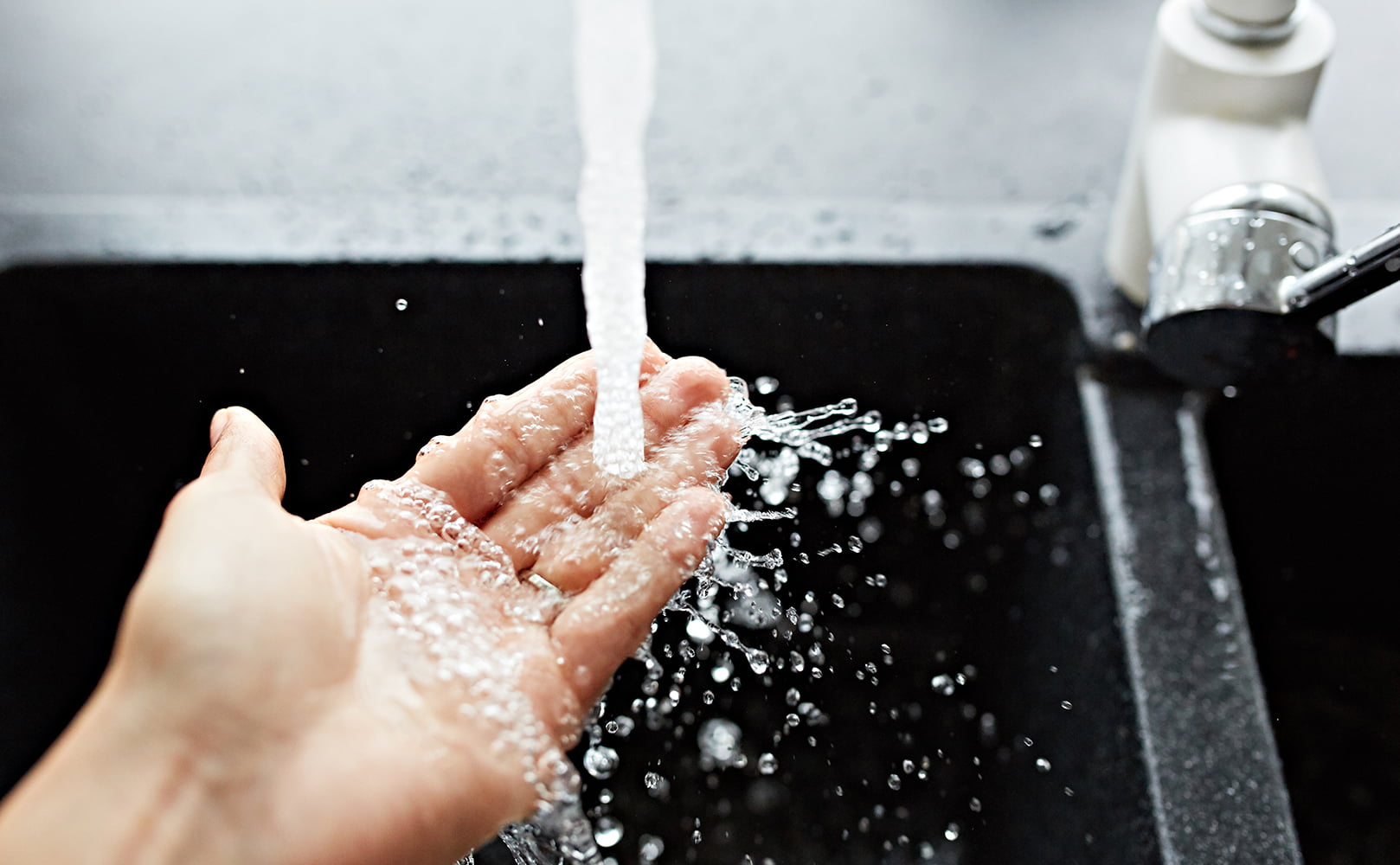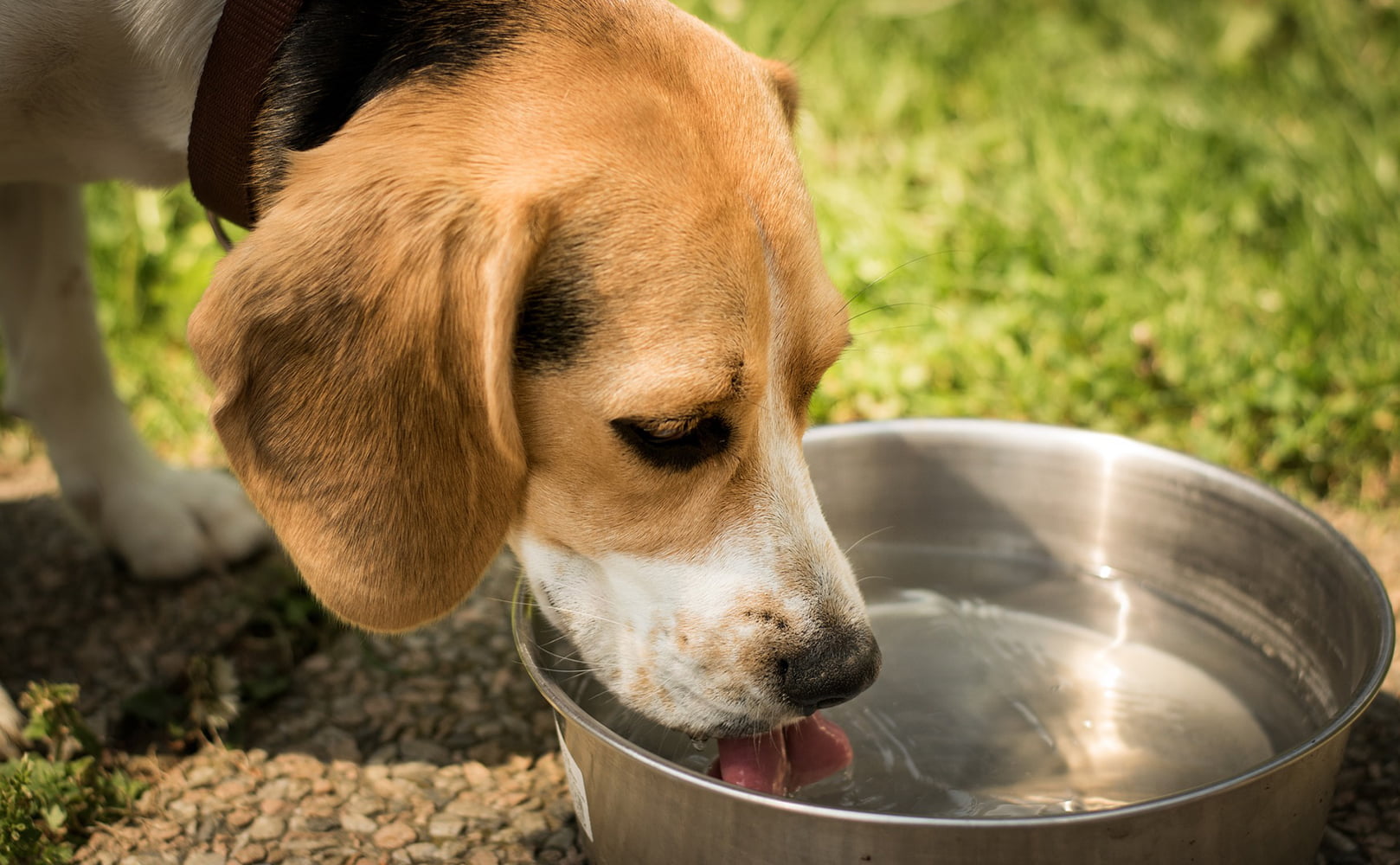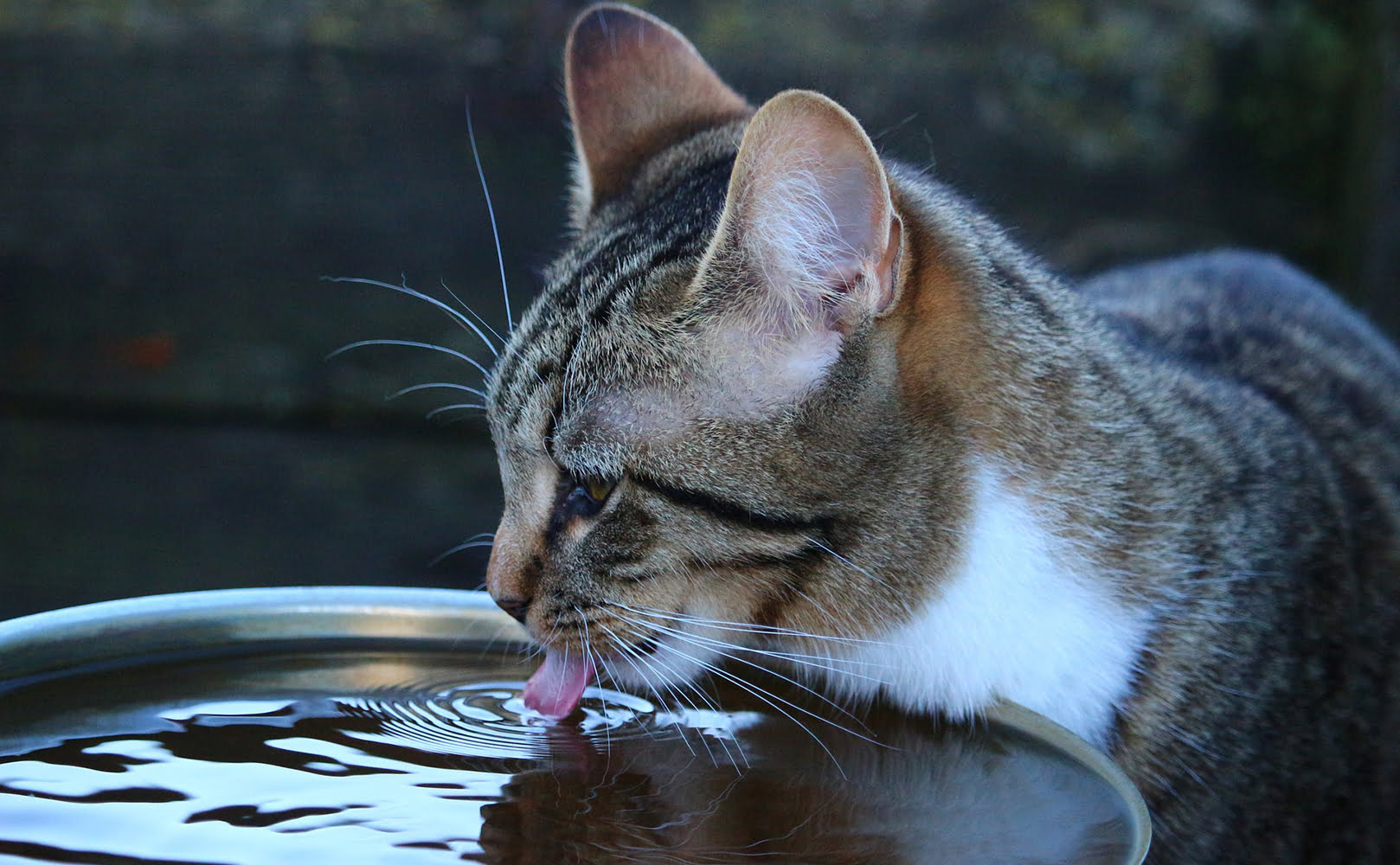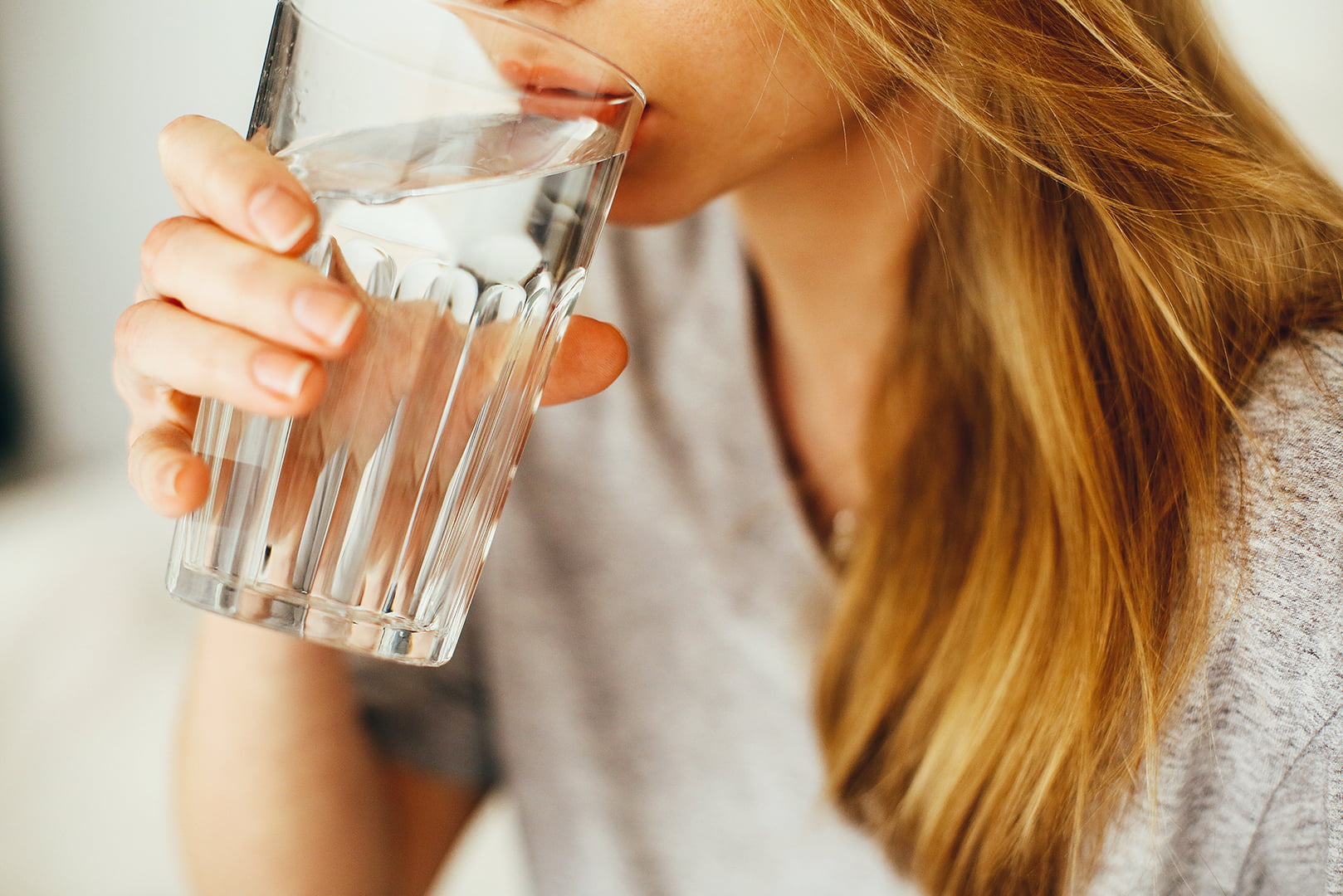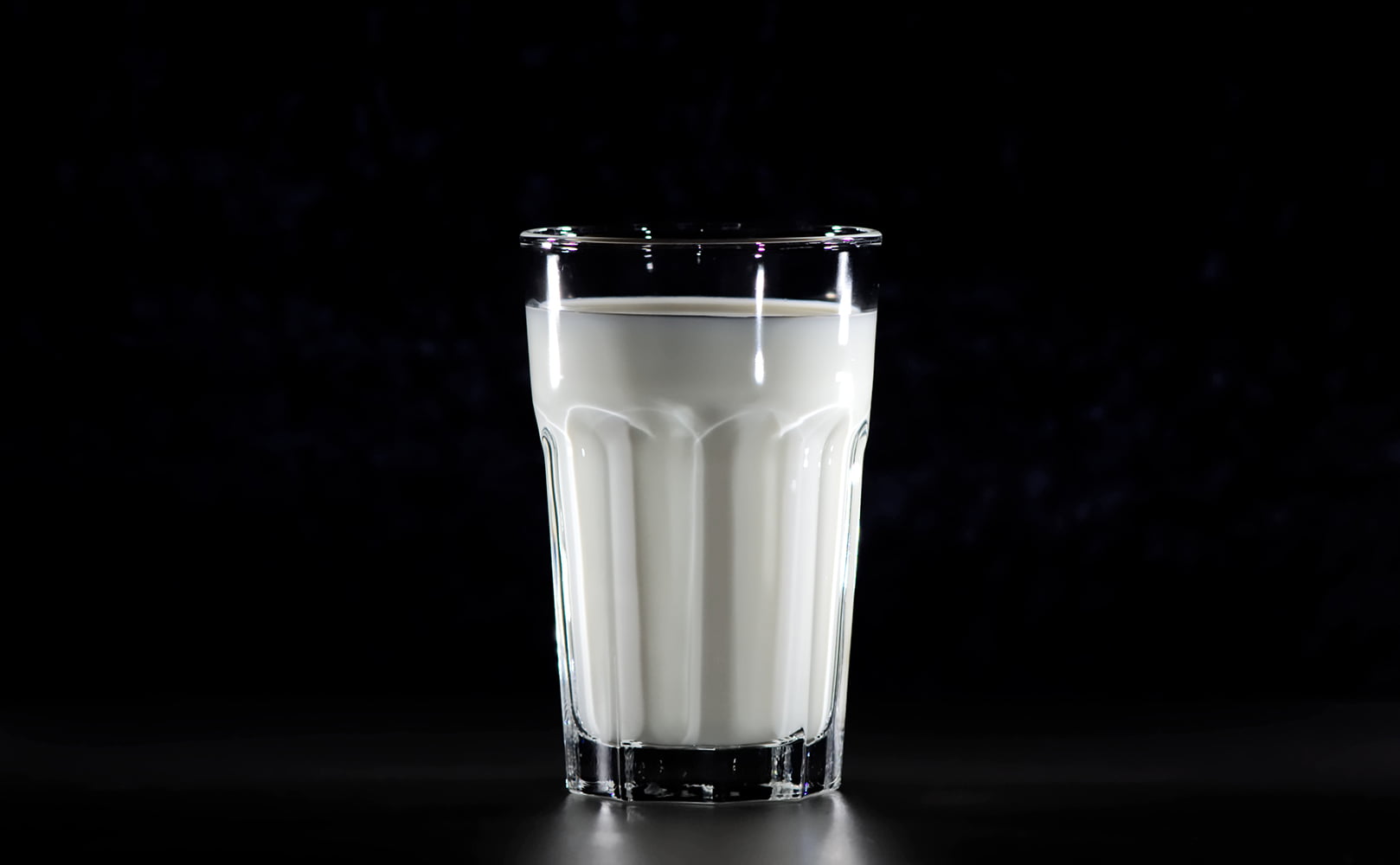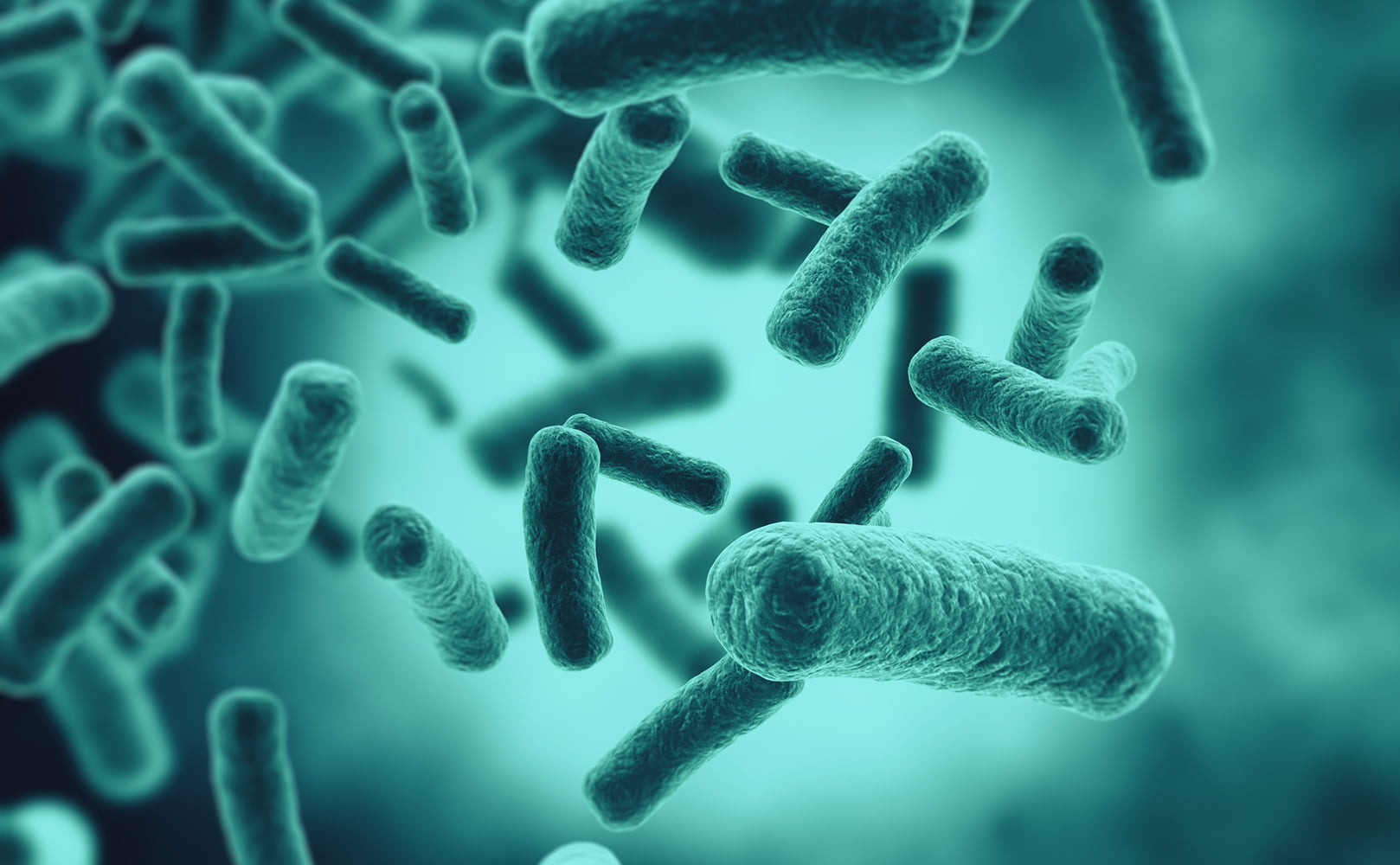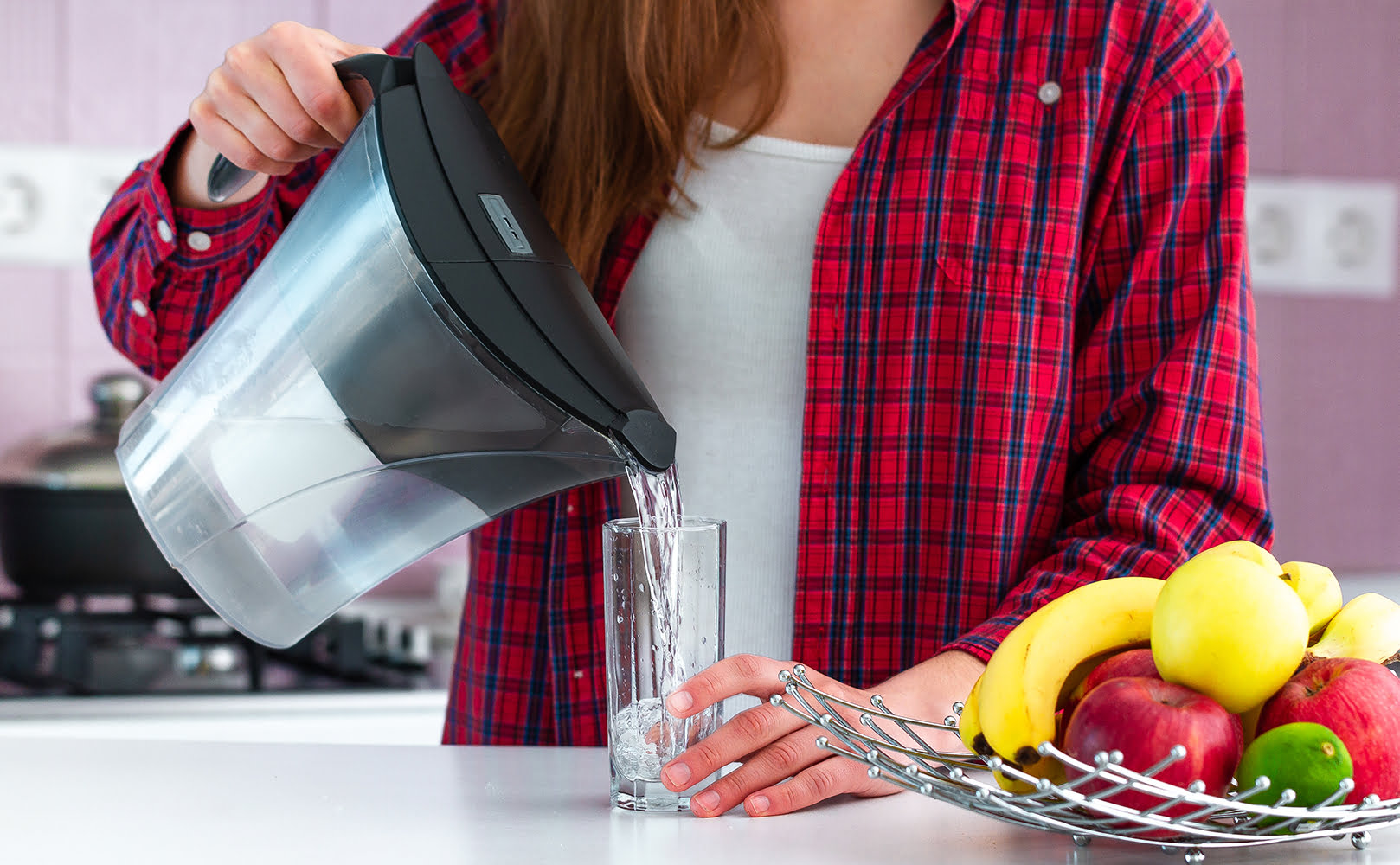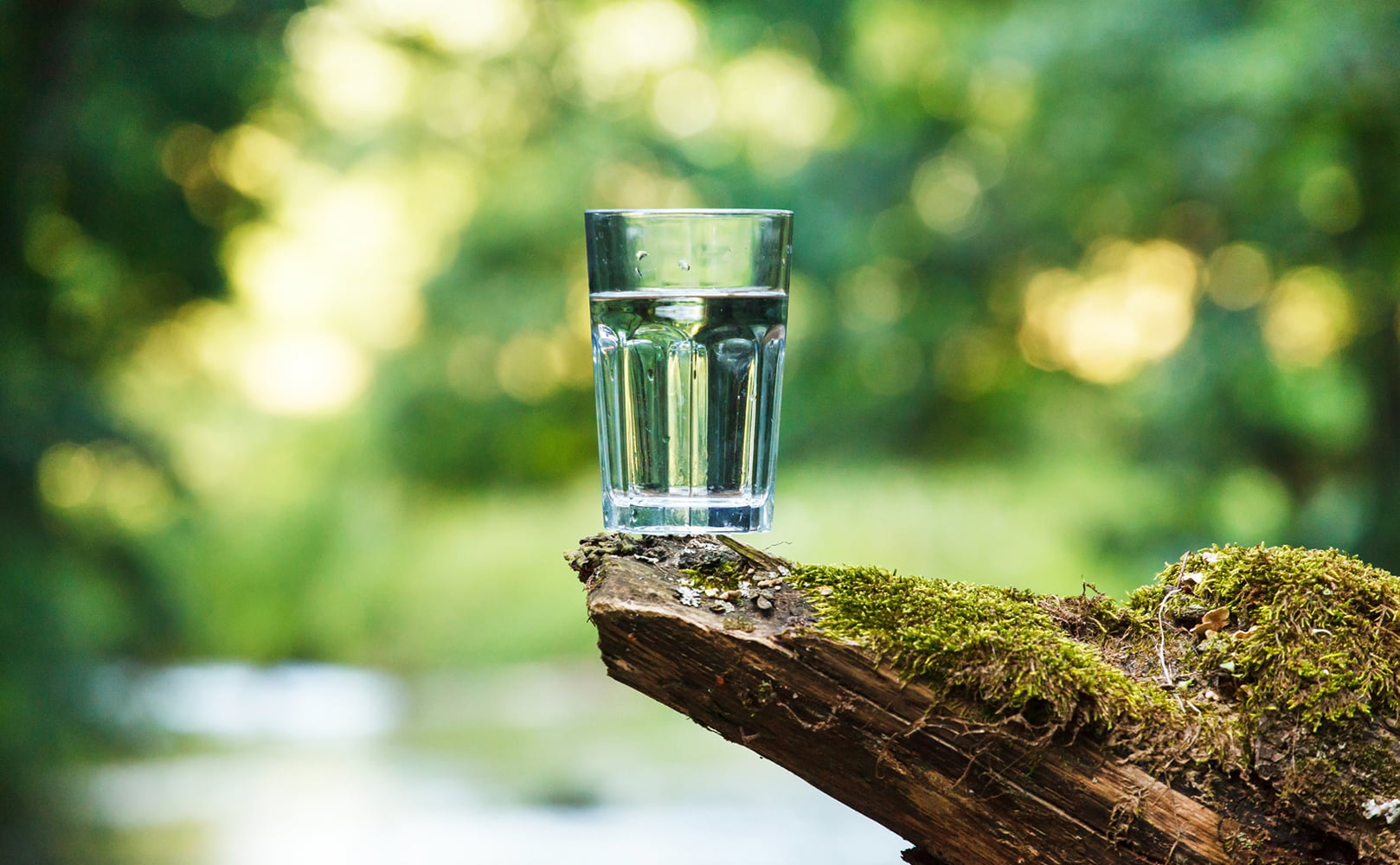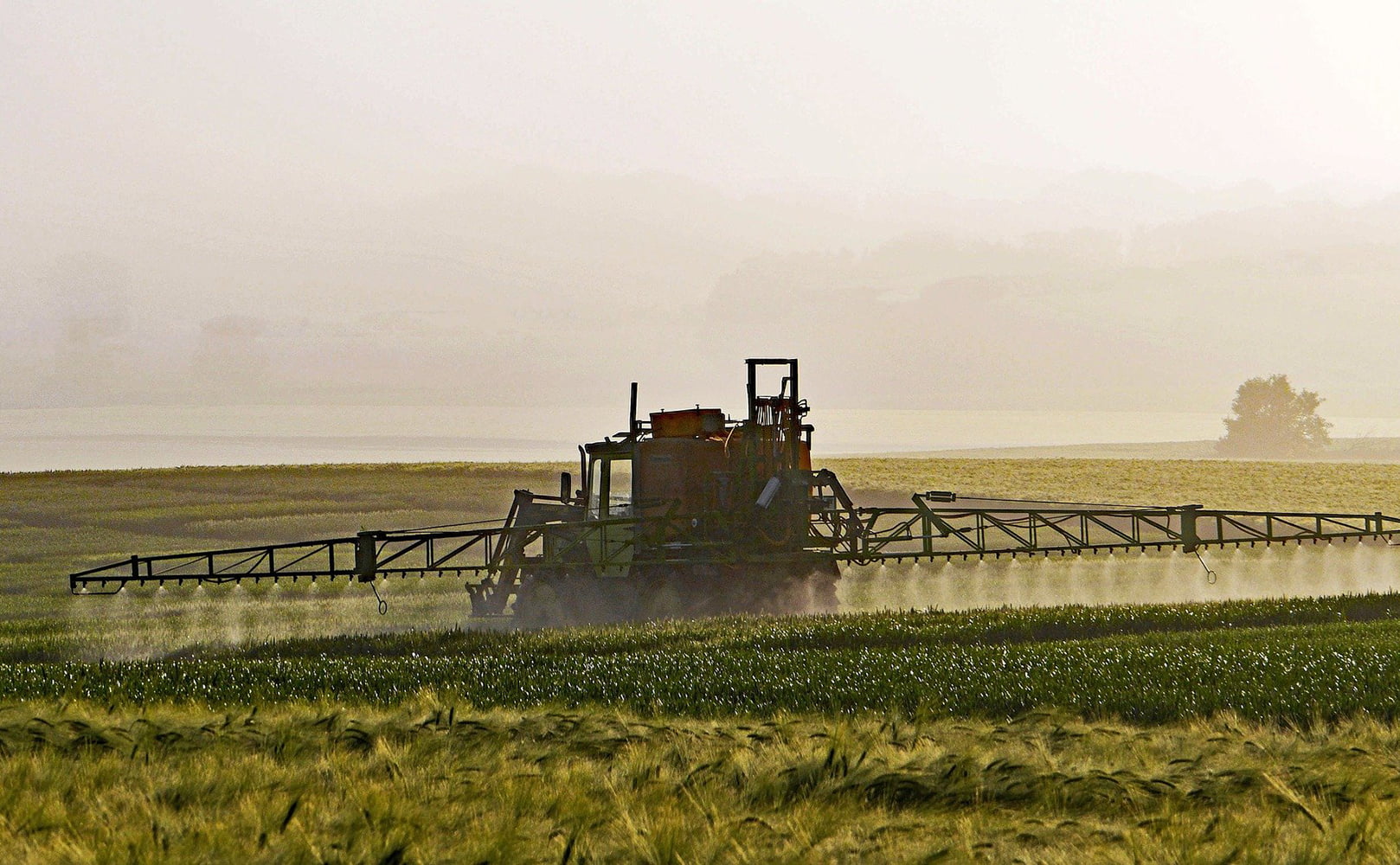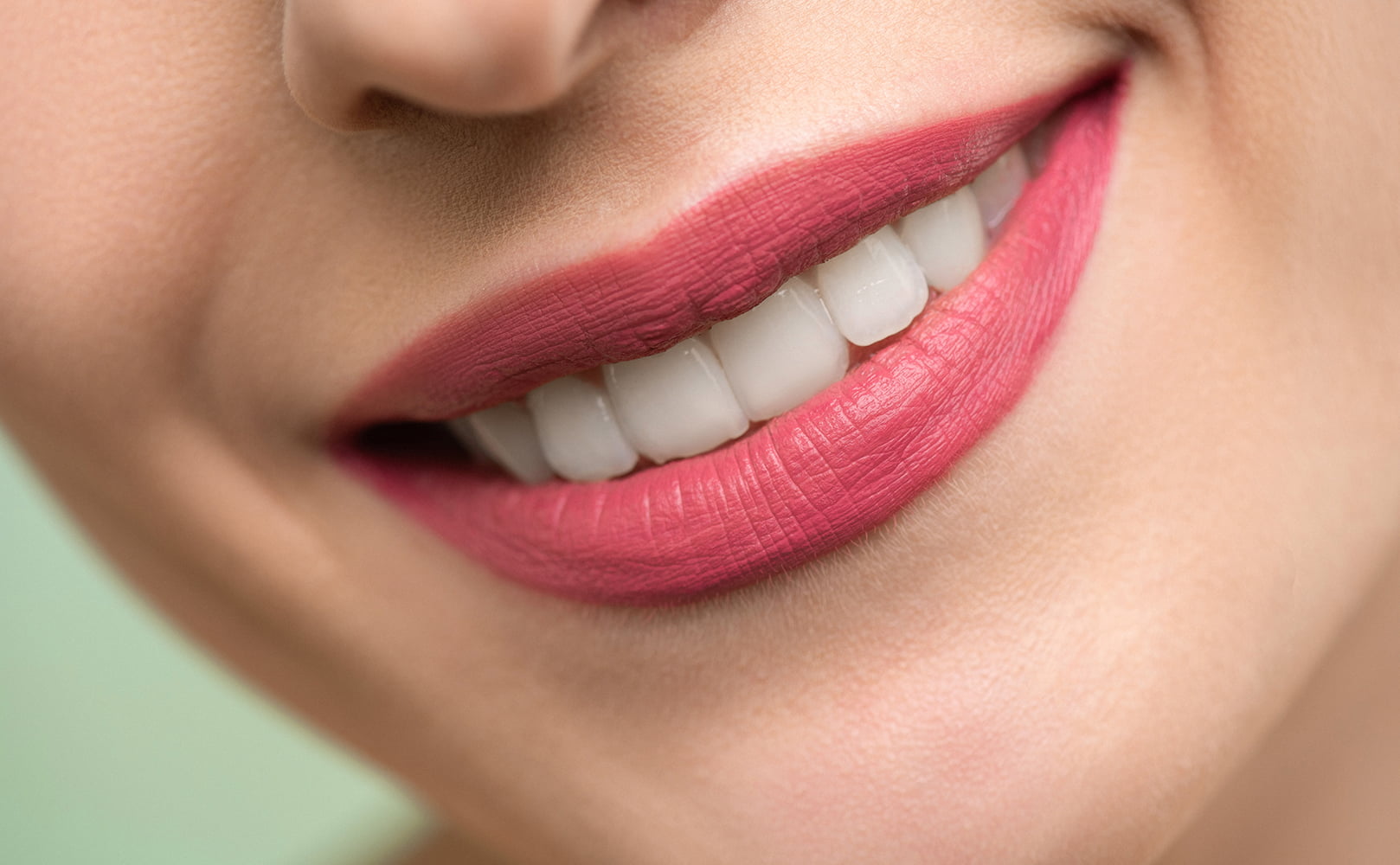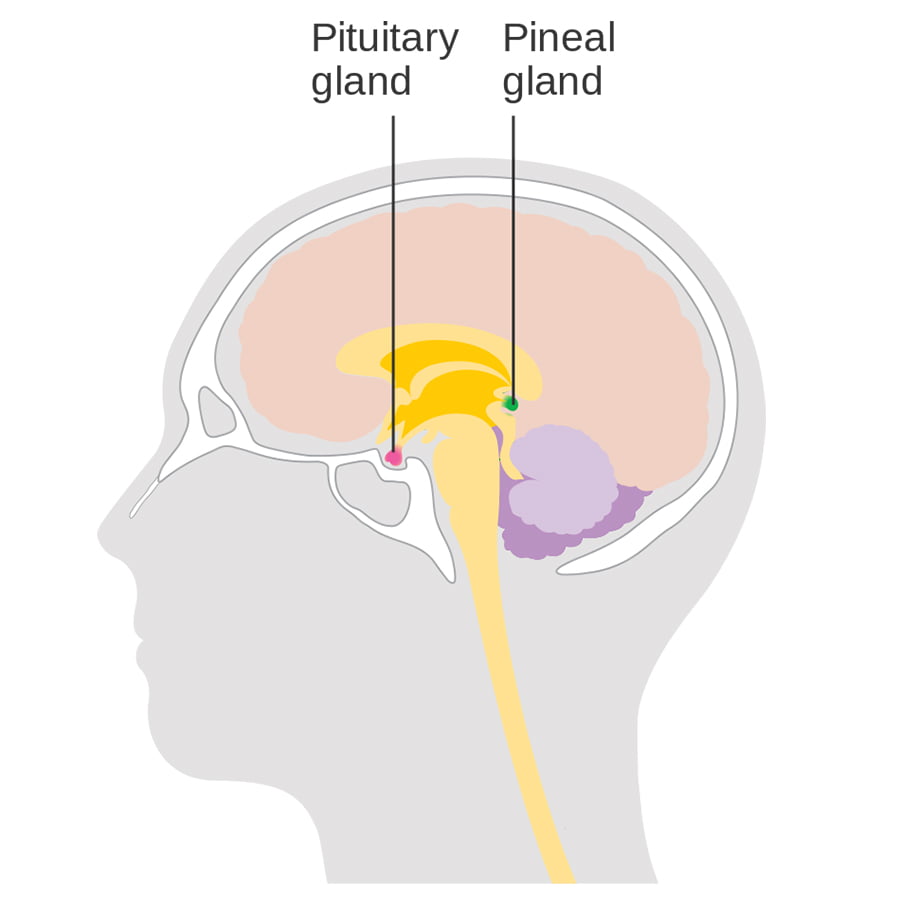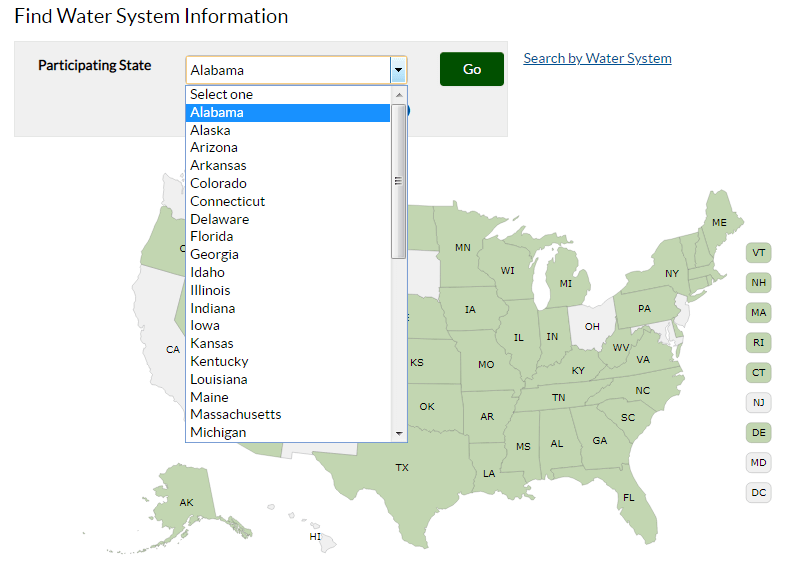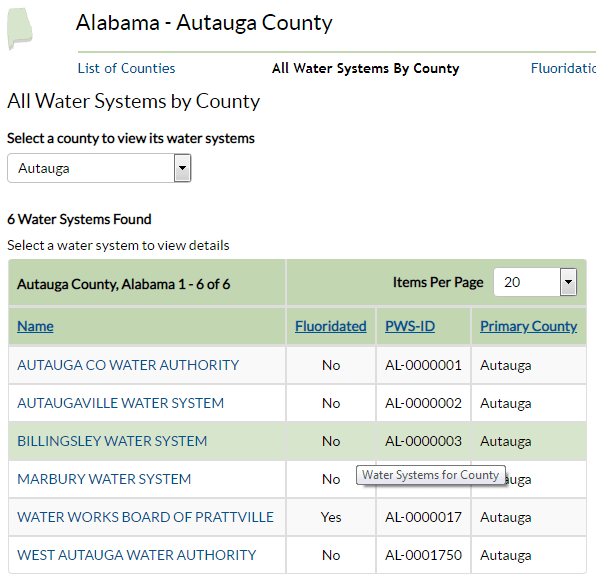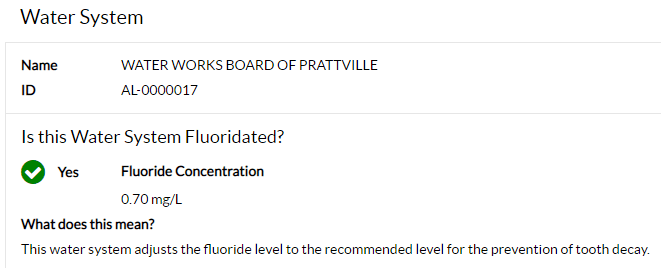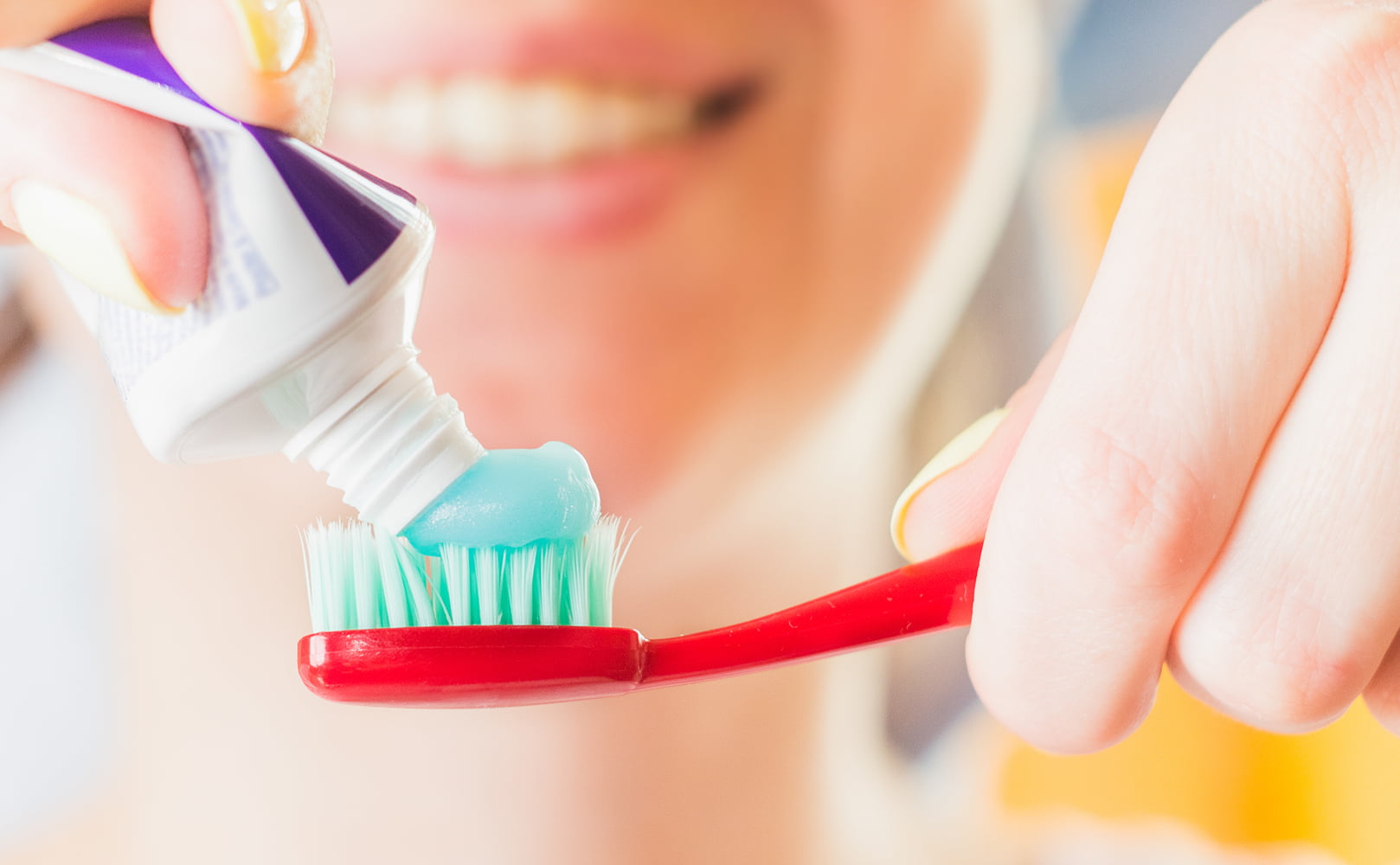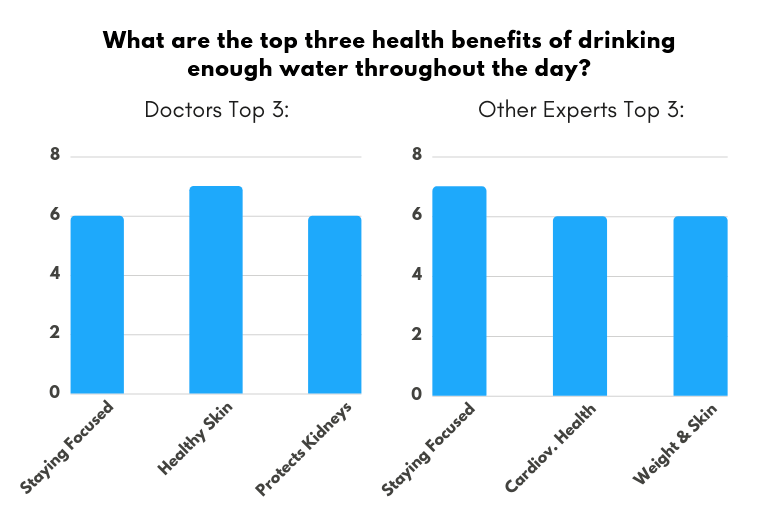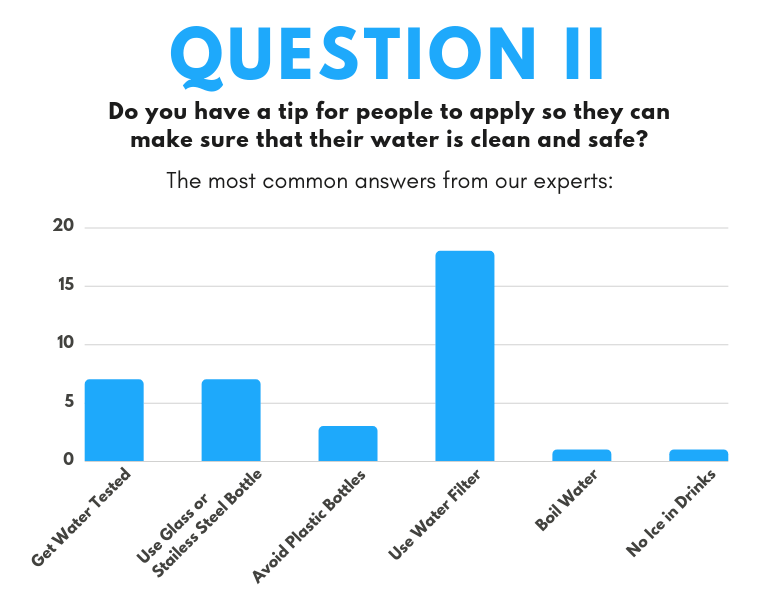Category Archives for Know How
Infographic: A Guide on Drinking Water Quality Around the World
Written by: Gene Fitzgerald // Last Updated: Aug 10, 2022
This page may contain affiliate links. If you buy a product or service through such a link we earn a commission at no extra cost to you. Learn more.
The following infographic outlines the quality of drinking water – that means tap and well water – around the world.
You might find this information useful if you are a passionate globetrotter and want to know where you can drink straight from the tap without thinking. Or like us, you simply find it interesting to learn in which parts of the world such a fundamental part of human existence as clean drinking water is still not self-evident (sadly).
After all, at least 2 billion people worldwide are using a drinking water source contaminated with feces; feces that cause diarrhea, cholera, polio and other diseases resulting in hundreds of thousands of deaths each year.
About the Data
We acquired the data for our infographic from 2 sources:
- The Report on Progress on household drinking water, sanitation and hygiene 2000-2017 published by the WHO/UNICEF Joint Monitoring Programme for Water Supply, Sanitation and Hygiene (JMP). The JMP maintains an extensive global database on estimates of progress on drinking water, sanitation and hygiene since 1990.
- Recommendations of the CDC (Centers for Disease Control and Prevention) to reduce one’s risk of travelers’ diarrhea and other diseases caused by unclean water. The CDC is one of the major operating components of the U.S. Department of Health and Human Services. Its mission is to protect America from health, safety and security threats, both domestic and foreign.
Explanation: Contamination-Free
The infographic lists the population percentage with access to contamination-free water supplies for each country in the year 2017. In this case, contamination-free means “compliant with standards for faecal contamination (E. coli) and priority chemical contamination (arsenic and fluoride)”. This is simply the definition that the JMP has used in the WASH report.
Of course, there are many more potential water contaminants that might do you harm when ingested – so be aware!
Interestingly enough, there are discrepancies between the WASH report data and what the CDC recommends.
Because for some countries where 98–99+% of the population has access to contamination-free drinking water (according to the WASH report), the CDC does not deem the water safe and recommends sticking to bottled water.
Maybe this is because the CDC relies on data that is outdated or different. Or maybe they just take a more conservative approach? We don’t know.
When in Doubt Stick to Bottled Water or Use a Filter
What we know is that when you are in doubt about the quality of your drinking water, either stick to bottled water or use a filter if possible. The best way to get access to clean drinking water is through a reverse osmosis system. There are even portable RO systems, some suited for traveling.
If you know what impurities you are facing you might also try a filter straw or a small gravity water filter system. This guide focuses on portable water filters that remove bacteria, pathogens, and viruses.
Infographic: A Guide on Drinking Water Quality Around the World
Enough said, let’s get on with the infographic!
Source Links:
JMP report: https://washdata.org/report/jmp-2019-wash-households
CDC recommendations: https://wwwnc.cdc.gov/travel/destinations/list
If you have any questions about our infographic please don’t hesitate to leave a comment below!
Information provided on BOS is for educational purposes only. The products and services we review may not be right for your individual circumstances.
We adhere to strict editorial guidelines. Rest assured, the opinions expressed have not been provided, reviewed, or otherwise endorsed by our partners – they are unbiased, independent, and the author’s alone. Our licensed experts fact-check all content for accuracy. It is accurate as of the date posted and to the best of our knowledge.

What Is the Best Water for Cats and Dogs to Drink? #PetHealth
Written by: Gene Fitzgerald // Last Updated: Jan 4, 2023
This page may contain affiliate links. If you buy a product or service through such a link we earn a commission at no extra cost to you. Learn more.
Have you ever put much thought into what type of drinking water you should give your cat or dog? It is one of the most essential nutrients after all and, just like us, our pets drink water every single day of their lives.
If you haven’t, we will discuss the different drinking water sources including their potential health implications in this post.
Some of the information on this page is based on the personal opinions of pet owners. You should consult your vet before making any changes to your pet’s diet.
The Best Water for Dogs to Drink
As a general rule, the best water for dogs to drink is water that you would drink yourself. If your tap water is clean and healthy and therefore good enough for you, the same probably goes for your dog (and for your cat, of course).
Likewise, if your tap water is not safe but poses a health risk don’t give it to your little furry. Sure, most dogs could eat a pile of dirt and not get sick, but better safe than sorry.
On a side note: Your dog may not be drinking adequate amounts of water due to taste reasons. Some tap waters, for example, are high in chlorine content which creates an off-putting taste and odor.
Can Dogs Drink Tap Water?
Can dogs drink tap water? Yes, they can. But every tap water is different so it depends on where you live. For example, there might be chemicals like pesticides or herbicides in your water, or metals such as chromium 6. The age of the water system you are connected to and your home’s plumbing are important, too. Homes built before 1986 often have a lead problem due to pipes or solder containing the neurotoxin. Then there are factors like algae blooms in spring/summer if you get your water from a nearby lake.
You should also pay attention to water hardness which can cause urinary problems in dogs (learn more).
Bottom line: If you want to play it safe, have your tap water tested or check the annual water quality report for your utility.
Can Dogs Drink Well Water?
There is a whole arsenal of contaminants that can make well water unsuitable to drink, for dogs as well as humans. Again, if you want to play it safe, have your water tested.
And just like tap water, well water can be high in minerals which, like we said, has been linked with urinary problems in dogs (more info below).
Hard Water
Both tap and well water (and other waters) can contain high amounts of hardness minerals, usually calcium and magnesium. In theory, if your dog drinks hard water over an extended period of time, conditions like urinary tract and/or bladder infections, cystitis, urinary obstruction, crystalluria and stone formation might result.
The good news is that you can easily test for hard water. Kits are available online and at your local hardware store among many other places.
Also, research suggests that problems usually only occur with extremely hard water. Water with normal hardness levels is unlikely to cause issues. What’s more, female dogs suffer from urinary problems more often than male dogs.
Soft Water
A conventional water softener exchanges hardness in water, that is calcium and magnesium ions, with sodium (sometimes potassium) ions rendering the water soft. How much sodium will be added depends on how hard the water is in the first place.
Although the level is generally relatively low and not a big deal, the sodium concentration can be too high to be considered healthy for dogs to drink – especially if your vet has prescribed a low-sodium diet which is often the case for specific breeds, elderly canine and those with cardiovascular or kidney diseases. In addition, some pets just don’t like the somewhat salty taste of softened water.
The exceptions to the rule are water softeners not based on ion exchange to make hard water soft. These so called water conditioners work salt-free and therefore don’t increase sodium levels.
Filtered Water for Dogs
Doing your own filtering or buying filtered water, you can be rest assured that what your dog drinks day by day is indeed safe.
As for the best filtration method, there is reverse osmosis and distillation that provide almost pure H2O. RO and distilled water can be great to treat urinary problems but may not be suited for healthy dogs in the long run (learn more here).
Carbon filtration gets you rid of most chemicals, some heavy metals, and bad tastes and odors. Then there are specialized filter media like activate alumina for more persistent stuff – think fluoride and arsenic. And lastly, UV light treatment kills waterborne pathogens.
Which method is best for you depends on the condition of your water, and also on your preferences: Do you want filtered water everywhere in your home or just at a single faucet? Do you prefer a filter pitcher over and under sink system? How about a faucet filter? And are you on a budget?
If you want to go the filtered water route, find out what’s in your water first. Then get the best filter for the job.
Water Fountains
There are water fountains that use filters. This way your dog not only gets access to clean drinking water, he is also encouraged to drink more and stay well hydrated. Why? In general, pets – in fact almost all animals – prefer to drink moving over stagnant water. Just remember to replace the filter regularly.
As an alternative, you could also filter the water first and then pour it into a fountain.
Can Dogs Drink Distilled Water? How About Reverse Osmosis Water?
The benefit of distilled as well as RO water is that it’s almost pure H2O. No microorganisms, no chlorine, no lead, no pesticides – you name it! So this is good. However at the same time, both waters lack all the naturally occurring, healthy minerals. This can cause low electrolyte blood levels in your dog and also lead to over-hydration or water toxicity among other conditions. We also read a report about dogs developing heart problems due to potassium deficiency, presumably because they were given distilled water exclusively.
It might also be that your dog simply does not like the flat taste of distilled/RO water preventing proper hydration.
On the other hand, highly pure water can aid in the treatment of urinary problems like infections, crystals and stones.
Bottom line: Some veterinarians don’t recommend distilled or reverse osmosis water for dogs, others do.
The question really is, Does your dog get all the salts and minerals it needs from its food? If so, distilled/RO water might be just fine. And there is definitely no need to worry about giving small amounts here and there.
One may also ask, Why do you want to serve your dog distilled/RO water? If there is a certain contaminant that you are worried about, maybe there is a better way to have it removed.
In our humble opinion, unless your vet has specifically told you to use distilled/RO water, stay away from it. If you insist on using it, consider remineralization. This will allow you to bypass all the potentially harmful contaminants and still make sure that your dog gets all the salts and minerals it needs.
Bottled Water for Dogs
Dogs, cats, humans – drinking bottled water is always a waste of money. Most is just tap water anyway and there is no guarantee that it is any better in terms of quality. On top of that, it creates a lot of plastic waste.
The only reason for us to buy bottled water is if you are on the go and don’t have another choice.
Mineral Water for Dogs
As the name suggests, mineral water is high in minerals. The mineral content might be too high actually and thus cause urinary problems.
Also see: Hard Water
Can Dogs Drink Carbonated Water?
Giving a dog carbonated water can lead to gastric upset. If given too much, the dog’s stomach might flip a.k.a. bloat which is life-threatening. Bloating is especially a problem with dogs that can’t burp properly and larger breeds in general. Other reactions that dog owners reported are diarrhea and vomiting.
It’s not like your dog just farts a few times and no real harm will be done. Do NOT let your dog drink carbonated water!
Can Dogs Drink Smart Water or Vitamin Water?
Yes, they can. Smart Water is spring water mixed with electrolytes. And although dogs don’t need the extra dose of salts and minerals after physical activity as much as we do, if a dog has been vomiting or suffers from diarrhea electrolyte drinks can replace what was lost and help prevent dehydration.
By the way, an alternative to Smart Water is unflavored Pedialyte. Don’t use flavored Pedialyte or Gatorade as it contains artificial sugars.
As far as vitamin water is concerned, some vets say that it can improve your dog’s health, while others say it is unnecessary.
Stagnant Waters, Puddles, Ponds, Lakes, Pools, Toilet Water, Sea Water
- Most dogs don’t care about the “freshness” of water. In fact, they usually enjoy drinking out of puddles, ponds and god knows what. However, stagnant waters that lack circulation are prone to harbor large numbers of waterborne pathogens that can cause serious infections like leptospirosis or giardia. Infections can also come from water in locations highly frequented by dogs so that they contain their own feces, infections that can be severe and even lead to hospitalization.
- Another danger are puddles on or close to roads and parking lots as they might contain antifreeze. The chemical can cause irreversible kidney failure. Symptoms include vomiting, diarrhea, lethargy, and ultimately coma.
- Furthermore, ponds as well as lakes can see algae blooms in spring/summer releasing toxic substances into the water as soon as the algae start to wither. Ingesting such toxins can damage your dog’s kidneys, liver and other organs.
- Pool water can be hazardous if your dog drinks large amounts and over an extended period of time leading to dehydration due to the elevated chlorine content. The acute symptom is an upset stomach. One or two mouthfuls every now and then should not pose a problem though.
- How about toilet water? It likely contains cleaner residues like bleach and other chemicals – maybe not the healthiest choice as the primary drinking water source. Regular ingestion can result in irritation of the intestines and vomiting.
- Sea water is extremely high in salt content. If you want to protect your four-legged friend from diarrhea and dehydration, don’t let him drink it.
All in all, most dogs can drink water from questionable sources with no ill effect, so don’t worry too much. Just remember to watch for symptoms of illness and if you feel like there is something wrong consult a vet immediately.
The Best Water for Cats to Drink
As with dogs, the best drinking water for cats is water that would be healthy for yourself.
That being said, kittens on a wet-food diet get the bulk of their daily water intake through eating. So in this case you don’t have to worry about the water issue as much.
Still, remember that cats have a weak sense of thirst. And chronic underhydration can cause health problems, especially with the urinary tract. In other words, you have to make sure that your cat drinks enough water, even if not a whole lot is needed. A fountain can help you achieve that. Just like dogs, certain cats prefer drinking from a flowing water source. Some cats also like to drink straight from the tap. And generally speaking, cats always prefer water that tastes fresh.
Can Cats Drink Tap Water?
Cats can drink tap water if the quality is up to standards. You can learn more about tap water quality issues above.
In a nutshell:
Consider having your water tested or check your municipality’s water quality report. Your cat may also not like the water if it’s high in chlorine. Above that, we read a forum message where a cat owner reported that his two cats kept getting sick due to tap water being treated with chloramine for disinfection. And lastly, you should pay attention to water hardness which can cause urinary problems.
Well Water/Hard Water – Is It Safe?
Also see: Can Dogs Drink Well Water and Hard Water
It is interesting to note that cats are more prone to developing urinary issues than dogs when being given hard water.
Soft Water
Also see: Soft Water
Most cats can sustain themselves on salt water (sea water), so giving them soft water is unlikely to cause problems under normal circumstances. However, it could be the case that your feline does not like the taste much.
Filtered Water for Cats
Also see: Filtered Water for Dogs
RO and Distilled Water for Cats
Also see: Can Dogs Drink Distilled Water? How About Reverse Osmosis Water?
Can cats drink distilled water?
As for dogs, distilled water should only be the primary water source for your cat when recommended by your vet, for example in case of urinary crystals. Mineral intake gets restricted effectively preventing bladder stones from forming.
Other than that, you probably want to stay away from distilled water.
Can Cats Drink Bottled Water?
Can cats drink bottled water? It’s a waste of money, but they can.
Sparkling Water
Sparkling water is a big no-no. Too much carbonated water can lead to hiccups and stomach bloat.
Can Cats Drink Salt Water?
As mentioned earlier, most cats can sustain themselves on salt water. Some, however, drink too much of it and suffer from elevated blood salt levels.
Pool Water
When you consider that cats can survive on salt water, pool water should not pose a problem; unless there is more in it than chlorine alone.
Questions? Don’t hesitate to ask – just leave a comment below!
Information provided on BOS is for educational purposes only. The products and services we review may not be right for your individual circumstances.
We adhere to strict editorial guidelines. Rest assured, the opinions expressed have not been provided, reviewed, or otherwise endorsed by our partners – they are unbiased, independent, and the author’s alone. Our licensed experts fact-check all content for accuracy. It is accurate as of the date posted and to the best of our knowledge.

Tap Water Quality – Is It All Just Politics?
Written by: Gene Fitzgerald // Last Updated: Oct 8, 2022
This page may contain affiliate links. If you buy a product or service through such a link we earn a commission at no extra cost to you. Learn more.
The President of the United States nominates the Administrator of the EPA who, among other things, is responsible for the regulation of public drinking water. Does this mean that tap water quality is all about politics?
Tap Water Quality – Is It All Just Politics?
The U.S. Environmental Protection Agency (EPA) regulates our public drinking water a.k.a. tap water. The Administrator of the EPA, nominated by the President of the United States, is the organization’s head. This makes him responsible for enforcing our nation’s Clean Water Act among other environmental protection statutes.
Now, President Trump’s first EPA Administrator, Scott Pruitt, an American lawyer, lobbyist and Republican politician from Oklahoma, had sued the EPA at least 14 times as Oklahoma Attorney General prior to his nomination. Having received major corporate and employee campaign contributions from the fossil fuel industry, Pruitt opposed environmental regulations and the “EPA’s activist agenda”.
In other words: Pruitt had spent much of his energy denying Americans the benefits of clean air and clean water, fighting the very agency he then led between February 2017 and July 2018.
At least one of his lawsuits against the EPA – all of them failed by the way (as of June 2014) – aimed at blocking the so-called Clean Water Rule. The regulation which was initiated by the Obama administration as an update to the Clean Water Act should have provided clearer protection of our nation’s waters. The focus was to clarify water resource management under a provision of the Clean Water Act of 1972, for example in order to strengthen the categorical protections of wetlands to minimize flooding and aid pollution remediation.
These wetlands and other water bodies such as streams are significant for the quality of our public drinking water. Water relied on by as much as 117 million people would have been affected by the implementation of the rule. Water that if polluted can have detrimental effects on what comes out of our taps.
Unfortunately, parts of the political right see government regulation and protection of our waters as a burden on economic growth. And to not infringe landowner rights the Trump administration suspended the Clean Water Rule until February 2020.
Another of Pruitt’s dubious moves, this time as EPA Administrator, was to withhold a study from publication. It was conducted by the DHHS Agency for Toxic Substances and Disease Registry (ATSDR) on the dangers of two chemical water pollutants named PFOS and PFOA. The study suggested that both substances could be harmful to human health at far lower levels than the Environmental Protection Agency previously deemed safe.
And although PFOS and PFOA had been detected in samples of water served to approximately 10 million Americans from 2010 to 2015, the study was published with delay due to the fact that the EPA administration feared a PR nightmare.
The good news is that by July 2018 Pruitt was under at least 14 separate federal investigations. Some had to do with conflicts of interests and management practices, others with his spending habits. He resigned eventually.
The bad news: Former coal industry lobbyist Andrew Wheeler started serving as acting administrator three days later and was confirmed as EPA Administrator in February 2019.
From 2009 until 2017, Wheeler had lobbied against the Obama Administration representing coal producer and tycoon Robert E. Murray. Unsurprisingly, Murray is a supporter of President Trump.
Coal mining can lead to increased concentrations of iron, manganese, aluminum, sulfate and overall acidity in nearby streams and rivers. This depletes the water’s ability to neutralize carbonate ions. As a result, the water becomes acidic and biodiversity decreases. Another consequence is contaminated drinking water.
Of course this is mere speculation, but we find it highly unlikely that Andrew Wheeler will set any new regulations on coal producers considering that he is buddies with one of them. In addition, Xcel Energy, a company which operates 18 coal power plants is another of Wheeler’s former clients.
It is also questionable whether or not Andrew Wheeler will take other steps necessary to improve tap water quality in our country. Under the guise of transparency, he argued in favor of a rule proposed under Scott Pruitt that would prohibit the EPA to work with studies that do not make raw data publicly available. This, however, would limit the research available to the EPA by a large extent and thus undermine its regulatory role.
Instead, Wheeler endorsed the use of double-blind studies and named the U.S. Food and Drug Administration (FDA) as a role model. This is only one instance where our current EPA chief has demonstrated his ignorance. Because what may be possible in drug trials is not necessarily feasible in the kind of research the EPA does. After all, the organization’s work revolves around tracking and measuring environmental impacts.
This is probably why the proposed rule was rejected by numerous large medical and scientific entities including the EPA’s own Science Advisory Board, the American Medical Association, the American Psychological Association, the American Lung Association, Nature journal as well as Cell, and a group of former EPA administrators.
One last comment, and this might be a little off-topic, but does it come as a surprise to you that both Scott Pruitt and Andrew Wheeler reject the idea of human-made climate change?
Outlook: Do Your Own Filtration
It is hard to think of anyone who would be less suited than Scott Pruitt and Andrew Wheeler to hold the office of the Administrator of the U.S. Environmental Protection Agency – which is bad since we desperately need new rules to govern, control and improve the quality of our tap water.
But it is what it is and we must work with what we have, and that is very efficient and affordable home water treatment technology:
- A reverse osmosis water filter system reliably rejects up to 99% of all contaminants and supplies almost pure water at one designated tap, usually the kitchen faucet.
- If you don’t like the taste of RO water – some people think it tastes a little flat – you can go with a standard under sink water filter. Filtration won’t be as effective, but if you know what contaminants you want to have removed you can choose the best filter accordingly.
- A whole house water filter allows for point-of-entry filtration. Thus, you get access to filtered water at every single outlet in your home, including showers. The filtration is more basic due to the high water volume. But again, if you know what you are facing you can choose the best system for the job.
- Other water filter types are countertop, gravity, faucet, pitcher, shower and refrigerator. And distillers purify water through boiling.
Thoughts? Just leave a comment below!
Information provided on BOS is for educational purposes only. The products and services we review may not be right for your individual circumstances.
We adhere to strict editorial guidelines. Rest assured, the opinions expressed have not been provided, reviewed, or otherwise endorsed by our partners – they are unbiased, independent, and the author’s alone. Our licensed experts fact-check all content for accuracy. It is accurate as of the date posted and to the best of our knowledge.

Why Does Your Water Taste Bad? Weird & Funny Tastes Explained
Written by: Gene Fitzgerald // Last Updated: Feb 2, 2023
This page may contain affiliate links. If you buy a product or service through such a link we earn a commission at no extra cost to you. Learn more.
Pure H2O that contains zero minerals or any other kind of impurity is completely tasteless. This is why even only tiny amounts of salts or chemicals in water causing the smallest change in taste can be noticeable.
It is also why we have so many waters that taste different, because water is never 100 percent pure – far from it.
Of course, it can also happen that you perceive a bad, weird or funny flavor that you have never tasted before. Is there something wrong? Today’s post explains why some waters taste the way they do and what you can do about it.
Tap, Well, Bottled – Why Does Water Taste Bad?
When we talk about bad taste, we first need to differentiate between tap, well and bottled water, as they are all prone to their own common contamination issues.
- Tap water is usually disinfected with chlorine or chloramine. This can create the characteristic “swimming pool” taste and odor. Above that, tap water travels a long way from the treatment plant to your home. The water source and the piping affect the taste of what comes out of your taps.
- If you have your own private well we are almost always talking about groundwater. Groundwater reacts with aquifer rocks and sediments as it moves underground. These geochemical processes leach constituents into the water which are perceptible at high-enough concentrations. This also means that well water is always subject to change. As a result, taste characteristics can vary.
- And probably most of us can associate bottled water with an unpleasant plastic taste.
In other words, the potential bad taste of water depends on where it originates from.
It Might Be You
It could be that you are the “reason” for the problem at hand. You might have a bad cold which influences your perception of taste. What’s more, people that just had their wisdom teeth removed might suffer from an impaired sense of taste. Fortunately this is only temporary in most cases. Water and other liquids tasting bitter is something that some chemotherapy patients experience.
So generally speaking, you might have to deal with taste issues due to physiological reasons. By the way, pregnancy is another one.
Furthermore, we have to remember that taste is subjective at least to some degree and you simply might have a very keen sense of taste. It’s also entirely possible that a certain water tastes weird to you, but someone else likes it and vice versa.
With all that said, below is a list of flavors that your water might have. We provide possible explanations for each (exempt physiological and health-related causes) and also what you can do about them. At the end you will find some general advice to follow.
1. Water Tastes Like Chlorine (Bleach)
Chlorine or bleach is probably the most common flavor in tap water. Some people may also describe the taste as “chemical”.
As already mentioned, municipalities use chlorine or chloramine to disinfect their water supply. This step is essential to make the water safe to drink. However, in excess amounts chlorine in particular makes water taste and smell like a swimming pool.
Chlorine taste can also be the aftermath of shock chlorination of a well.
The good news: Chlorine taste and odor can easily be removed with a basic carbon water filter – unless you are dealing with chloramine; here you will need catalytic carbon. Both filter types are available in many different forms and sizes, either for the point of use (e.g. under sink water filter) or the point of entry (whole house water filter).
With chlorine, heating the water for several minutes (distilling also works) or simply letting it sit for a while helps too. And so does adding Vitamin C – think fruit infusion. Vitamin C is also great for neutralizing chloramines. Another viable but less common alternative is UV light treatment which reduces chlorine and chloramines into easily removable byproducts. Chloramine removal through boiling is also possible.
2. Water Tastes Bitter
Water that tastes bitter is often acidic and thus high in dissolved metals, first and foremost copper and zinc, as acidity accelerates corrosion of pipes and fittings. We recommend you have your water tested ASAP, especially the water pH. Corrosion could result in elevated lead levels which is highly dangerous.
Copper and zinc can also come from an aging water supply system, an old water tank or heater, or from a wrong combination of plumbing materials.
In general, the bitter taste will likely be most obtrusive in the morning when you first open a tap. This is because the water has been sitting in the line all night. Run the tap for some time to draw fresh water in.
If you are on well water, naturally occurring iron and manganese are probably the culprits. The latter is responsible for a bitter metallic taste. Another possible cause is high sulfate content. (Source)
What can you do?
- For iron and manganese, have your water tested first. You need to know what type(s) of iron you are facing. In addition, test for hydrogen sulfide and iron bacteria. Lastly, determine water pH, temperature and alkalinity as well as dissolved oxygen content. Then you can choose the best iron filter tailored to your situation.
- Copper and zinc can be eliminated via ion exchange, reverse osmosis, activated charcoal filtration or distillation.
- Lead can be taken care of using a reverse osmosis system (find the best reverse osmosis systems here), a carbon filter or a distiller.
- A neutralizing filter or liquid injection system can be used to balance water pH. Both are point-of-entry systems and solve the corrosion problem for your entire plumbing.
3. Water Tasting Like Metal
Also see: 2. Water Tastes Bitter
A metallic taste indicates the presence of metals such as iron, copper, zinc or manganese.
They may be naturally occurring, originate from an aging water system or wrong combination of plumbing materials, or enter your water due to corrosion if the pH is outside acceptable ranges.
4. Water Tastes Like Blood
Also see: 2. Water Tastes Bitter
The taste of water high in iron content can resemble blood.
5. Milky Taste
Water with a lot of calcium may remind you of milk, but this is only speculation.
6. Water Tastes Like Plastic
Water that tastes like plastic is usually bottled water stored in plastic containers. Simply put, tiny plastic parts leach into the water over time. This is all the more noticeable in hot weather which amplifies the process.
Our only recommendation is to stay away from bottled water that comes in a plastic container.
If it’s tap water that tastes like plastic it most likely has to do with plastic piping. It’s the most popular plumbing material today since it is so cheap and easy to install. If installed only recently, chances are that the taste will disappear with time (flush thoroughly). If not, have a plumber check the pipes.
In case the taste reminds you of an antiseptic your dishwasher or washing machine might be causing the issue. Were they installed properly? They should also have a check valve to prevent backflow.
7. Waster Tastes Dirty
Algae blooms or bacterial growth in the water system you are connected to or your own plumbing can result in dirty tasting water.
For more information check: 11. Earthy, Musty, Moldy Water.
But maybe the most obvious answer is correct: There actually is dirt a.k.a. sediment in your water. If so, you should see tiny particles floating in your glass. The solution? Get a sediment filter.
8. Why Does My Water Taste Sweet?
Calcium, iron or imbalanced water alkalinity or pH levels can have a sweetening effect, believe it or not. The same goes for certain types of plumbing.
Try flushing your system. If that doesn’t help look into the various water treatment methods mentioned in this guide.
9. Sour
Sour water is acidic, so water with a low pH. Acidity not only accelerates corrosion of pipes and fittings causing leaks, it could also elevate levels of toxic lead. Have your water tested ASAP!
For more information check: 2. Water Tastes Bitter.
10. Soapy
Soapy water is a rare phenomenon and may be caused by:
- Your dishwasher or washing machine – Due to a broken check valve the wastewater stays in the water supply for too long. Replace.
- Deterioration of flexible hoses – Replace.
- Backflowing issue – Investigate.
- Septic tank leakage – Investigate.
- (Bottled) water with high pH – Switch brand.
11. Earthy, Musty, Moldy Water
An earthy, musty or moldy taste is often an indicator for seasonal algal blooms in the source water. Now, due to the fact that municipal water gets proper treatment no algae will make it to your home, but the taste may linger for a while.
Other possible explanations are bacterial growth or decaying organic matter within the water system and water bodies as well as the soil the water filters through in case of well water. Or it’s the well itself and thus time for another shock chlorination to get a start fresh.
A third possibility is infestation of your own plumbing system or fixtures. Check if every outlet in your home has the same dirt-like taste or if it’s an isolated problem. It might also be that the resin bed of your water softener needs cleaning, or your tank water heater.
The fault lies within your entire plumbing? Flush with bleach solution and make sure to soak faucet aerators for 15 minutes. If it’s a single source remove the aerator and clean it. A bath in bleach solution or vinegar may be necessary.
You should also consider having your water tested for microbes.
A water filter system based on activated carbon will most likely be able to take care of the taste issue. Reverse osmosis works, too. Although funnily enough, if you already have a filter system installed it could be the root of the problem in case it has been neglected for too long. Mold, mildew, bacteria and the like might have accumulated in the filter itself and/or other parts so that you need to do some cleaning and replace the cartridge.
12. Salty
High concentrations of chloride, sulfate or Total Dissolved Solids make water salty.
- Chloride can be naturally occurring but also results from industrial waste and irrigation drainage. What’s problematic about it is that it can corrode pipes.
- Sulfate is natural in well water. Or it may be the result of industrial waste.
Saltiness may also come from road salt, or salt water or sewage getting into the water supply. Especially the last two causes need to be addressed immediately.
A reverse osmosis system can handle saltiness with ease. And although in most cases the water will be safe to drink, it is important to have it tested for the above reasons.
If you have a water softener installed in your home it might use too much salt. Check the settings. There could also be something wrong with the regeneration cycle or the unit is malfunctioning in another way. Time to investigate!
General Advice
First Steps
A new, bad or strange taste or rather aftertaste doesn’t necessarily implicate that there is something wrong with your water. But it is definitely an indicator that you should pay attention. It could be a sign for potentially dangerous contamination that needs to be taken care of.
Stop drinking the water immediately. Then try a different water source. Maybe you can visit one of your neighbors? If it’s only your house where the off-taste appears you need to check your plumbing as well as your septic tank and private well if applicable. Consult a licensed plumber if need be. You should also consider having your water tested.
If the whole neighborhood has the taste, reaching out to your local municipality should bring clarity. Their annual water quality report might also point you in the right direction. And again, think about having some individual testing done.
Filtration
Testing or not, if you cannot identify and remove what’s causing your water to taste off your only option is to filter. Unless you know that it’s only a temporary issue and you have a suitable alternative for the time being. If it’s a permanent thing then you need to act.
On a side note: If you recently moved to a new location it might be that you just need some patience to get used to your new water. Like we said, different waters taste different.
Fortunately, most taste issues can be resolved with the right filter system. The impurities in question will be removed and you get access to delicious, odor-free water. On top of that, you will have peace of mind knowing that you are not ingesting noxious water day after day.
As for what type of water filter to choose, there are plenty of options and it really depends on what contaminants you are facing.
- An activated carbon filter is usually enough to make most waters taste much better. It’ also good for lead removal and takes care of a bunch of chemicals.
- Reverse osmosis provides the most thorough purification for almost pure H2O.
- Distillation is on par with reverse osmosis but usage is less convenient and the boiling process requires quite a bit of electricity.
- There also is a difference between point-of-use and whole house applications. Point-of-use units include under sink water filters, countertop filters, gravity systems, faucet and pitcher filters, distillers, shower filters, and refrigerator filters. A whole house water filtration system gets installed at the main line where the water first enters your home. Thus you have filtered water at every outlet.
Boiling, Aging, Water Infusion, Cooling
Some contaminants can be boiled out of water. Volatile substances dissipate if you let the water sit.
Fruit infusion or adding lemon or lime juice to your water can help, too. And so does cooling. But you have to be certain that the underlying contamination issue does not pose a health threat.
Questions? Don’t hesitate to ask – just leave a comment below!
Information provided on BOS is for educational purposes only. The products and services we review may not be right for your individual circumstances.
We adhere to strict editorial guidelines. Rest assured, the opinions expressed have not been provided, reviewed, or otherwise endorsed by our partners – they are unbiased, independent, and the author’s alone. Our licensed experts fact-check all content for accuracy. It is accurate as of the date posted and to the best of our knowledge.
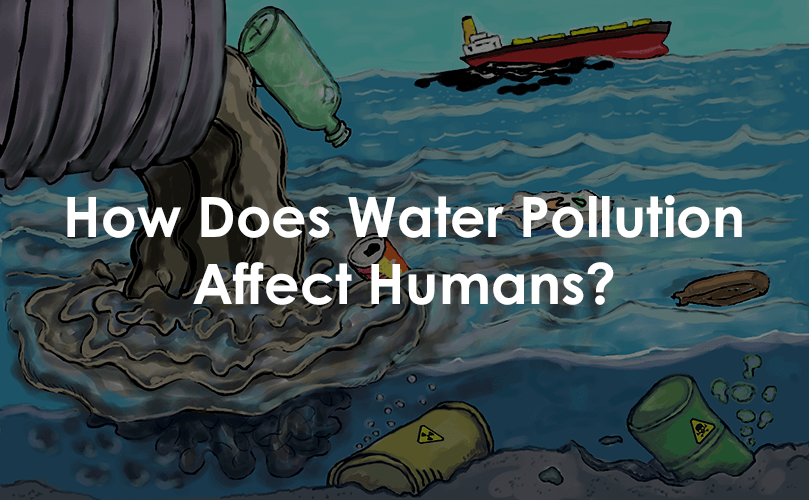
How Does Water Pollution Affect Humans (+ What Can You Do)?
Written by: Gene Fitzgerald // Last Updated: May 31, 2023
This page may contain affiliate links. If you buy a product or service through such a link we earn a commission at no extra cost to you. Learn more.
Water pollution can affect us in lots of different ways and on so many levels.
There is groundwater pollution for example that impacts water quality for residents receiving their water from a private well. Then there is ocean pollution that is unsightly – think littering – and contaminates food chains so that pesticides, heavy metals and other harmful contaminants that found their way into the sea will eventually end up on our dinner plates in form of sushi.
This article is about the many faces of water pollution, the effects it has on us as human beings, and the most effective water filtering solutions.
What Is Water Pollution?
“Water pollution occurs when harmful substances (…) contaminate a stream, river, lake, ocean, aquifer, or (an)other body of water, degrading water quality and rendering it toxic to humans or the environment.” (Source)
This does not mean, however, that the pollution of a water body is always man-made, although it usually is a result of human activity.
Natural changes in water quality might occur due to
- Volcanic activity
- Algae blooms in hot weather
- Storms
- Earthquakes
On the other hand we have human-induced water pollution which can be categorized in:
- Groundwater Pollution – This type of contamination happens when pollutants released into the soil leach into an aquifer. An aquifer is an underground water storehouse so to speak. Its contamination may render an aquifer unusable. The big problem with this is that not only is groundwater the only freshwater source for many people living in rural areas, groundwater also provides 43% of the water used for irrigation in the United States. In other words, chemicals and other harmful substances will likely spread and contaminate other areas of our lives, too.
- Surface Water Pollution – Lakes, rivers, ponds, wetlands and of course our oceans are different kinds of surface water bodies. The bad news is that 46% of U.S. rivers and streams are in poor condition, according to an EPA assessment from 2008-2009. The biggest issue are elevated phosphorus and nitrogen levels causing algae blooms that lead to oxygen depletion. And it’s the same with our lakes: More than one-third contain excessive levels of phosphorus and nitrogen affecting wildlife as well as public health. Where does all the phosphorus and nitrogen come from? It’s agricultural runoff. Of course, industrial and municipal waste also contribute to the ongoing pollution of our surface waters. What makes the situation even worse is that in many cases groundwater and surface water feed off one another. The pollution of one entity almost always leads to the pollution of the other.
- Marine Pollution – We’ve all seen pictures of a sea turtle caught in plastic. However, larger debris is only one part of the equation. Ocean pollution that we can’t see with our naked eye is presumably much more serious. Also, what you have to know is that most pollutants come from land. Heavy metals and chemicals for example are carried by our waterways from farms and industrial plants into estuaries and later out to sea.
- Point Source vs. Non-Point Source Pollution – We can also differentiate between point source and non-point source pollution. As the name suggests, the former originates from a single source such as an oil spill. The latter has more diffuse causes like stormwater runoff where it’s impossible to identify a single culprit which makes regulation much harder.
How Water Pollution Affects Us As Human Beings
How does water pollution affect us as human beings?
First and foremost, it can have a negative impact on our health, obviously. Apart from that, it may cause revulsion – who wants to swim in water full of plastic?
The first aspect is much more severe which is why we are going to discuss it in a bit more detail.
Health Effects
Drinking water alone is estimated to cause 502,000 diarrheal deaths each year. By the way, this does not include mortalities due to other diseases triggered by contaminated drinking water and all types of water in general.
And let’s not forget that polluted water does not have to kill you. Schistosomiasis is a disease caused by waterborne parasites that currently ail almost 240 million people worldwide. To get infested, direct skin contact with contaminated water is all it takes.
Other waterborne pathogens can originate from human and animal waste spreading diseases such as cholera. This not only affects developing countries, but thousands of Americans that come down with Legionnaires’ disease each year.
In addition, many more contaminants that are capable of making you ill have found their way into our supply systems in the past decades. One prominent example for this is the lead crisis in Flint, Michigan which we’ve covered in great depth in our lead water filter guide here. Although there really is no safe level for lead in drinking water, it is being served to hundreds of thousands of U.S. residents each year leading to intellectual impairment in our children.
Another very common chemical pollutant is chlorine used for disinfection. Chlorine itself can not only cause skin rashes and respiratory problems when inhaled in the shower. When reacting with biological waste it forms disinfection byproducts that are associated with an increased risk of cancer and problems during pregnancy.
And there are many more ways how polluted water can compromise our health.
What Can You Do?
There are a couple of measures that you can take to
- Protect your family from the health risks posed by contaminated water sources.
- Lower your pollution footprint to help tackle the problem at hand head on.
1. Protecting Your Health
What you can do as a health protective measure is filter the water in your home, whether you are on a well or receive tap water doesn’t really matter. Now this is easier said than done which is why we have dedicated a whole website to this topic.
It all starts with filtering the water that you use for drinking and cooking.
In cases of severe contamination, reverse osmosis and distillation are your best friends. Both technologies provide the cleanest H2O possible with almost 100% purity. However, the purified water will be deprived of all healthy minerals so consider remineralizing your water before consumption.
Regular carbon filtration used by pitcher filters, countertop & under sink systems and faucet mounted units is great for removing chemicals. Earlier on we mentioned chlorine as a water disinfectant that you can eliminate this way. (If you want to learn more about chlorine reduction in tap water or would like to browse a list of top chlorine filters, read this guide.)
What do you do if you want access to filtered water at every outlet in your home? In this case, a whole house water filter system is exactly what you need. It will filter all the water before it gets distributed to your bathrooms and kitchen etc.
This allows you to drink straight from every tap and at the same time enjoy contaminant-free showers.
On a side note, clean water in your entire house will also improve indoor air quality as it prevents volatile substances to evaporate. Another benefit is that some whole home filters can reduce water hardness and thereby increase the lifespan of your home appliances (but that’s for another post).
The downside to whole house water filters are high cost, meaning a high price tag plus expenses for installation if you are not handy with tools and require professional help.
If you want you can check out our whole house water filter toplist.
Also, the following table provides an overview of the different types of filters and their uses:
| Type | Attribute | Cost |
|---|---|---|
| Reverse Osmosis Systems | Highest Water Purity | $$ – $$$ |
| Distillers | Highest Water Purity | $$ – $$$ |
| Filter Pitchers | Only Basic Treatment | $ |
| Countertop/Under Sink Units | Water Safe for Drinking | $$ |
| Faucet Mounted Filters | Only Basic Treatment | $ |
| Whole House Filter Systems | Filtered Water At Every Outlet | $$$$$ |
| Shower Filters | Clean Shower Water | $ |
2. Lowering Your Pollution Footprint
In order to lower your pollution footprint, the first thing you should do is reduce the amount of plastics that you use. Also, reuse and recycle whenever possible. Speaking of water, plastic bottles are one of the worst inventions ever – please stay as far away from them as you can.
What you should also do is dispose of cleaning agents and other hazardous chemicals properly. And in your garden, try to avoid the use of fertilizers, herbicides and the like.
If you have a sewage system, make sure that it functions as intended and remember that paint, thinners and solvents have no place in there.
Conclusion
Groundwater pollution, surface water pollution, ocean pollution – the way we treat our water sources has to change now, before we pass the point of no return. Otherwise, we won’t be able to live on our planet for much longer.
Considering the severe effects that contaminated water can have on our health, make sure to protect yourself by using one of the treatment solutions listed above if need be.
Questions? Don’t hesitate to ask – just leave a comment below!
Information provided on BOS is for educational purposes only. The products and services we review may not be right for your individual circumstances.
We adhere to strict editorial guidelines. Rest assured, the opinions expressed have not been provided, reviewed, or otherwise endorsed by our partners – they are unbiased, independent, and the author’s alone. Our licensed experts fact-check all content for accuracy. It is accurate as of the date posted and to the best of our knowledge.
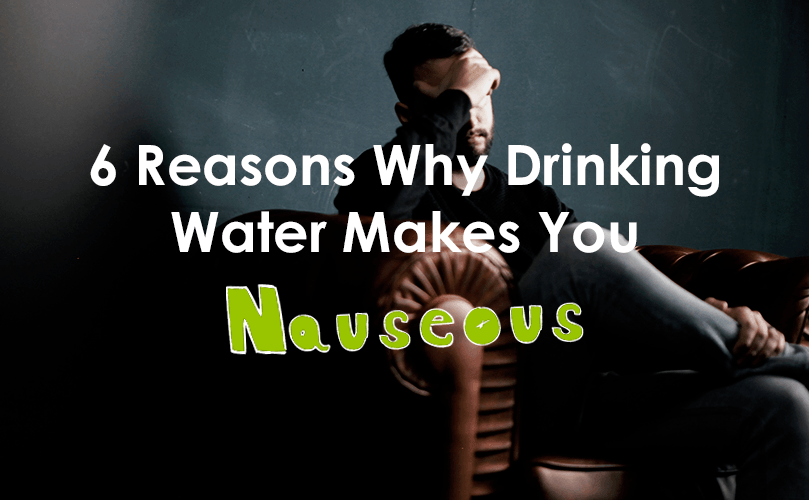
Nauseous After Drinking Water? Here Are 6 Reasons Why You Might Feel Sick
Written by: Gene Fitzgerald // Last Updated: Sep 14, 2022
This page may contain affiliate links. If you buy a product or service through such a link we earn a commission at no extra cost to you. Learn more.
Did you ever feel nauseous or sick after drinking a glass of water?
Have you ever asked yourself why that happens?
Well, there definitely is more than one possible explanation. So if you want to learn more, check out today’s post!
Nausea
Nausea is not painful but it can be highly unpleasant and it often comes with an urge to vomit.
The purpose of nausea is to stop you from repeating whatever caused the discomfort. The physiology behind it has yet to be clarified, however, four pathways in the human body have been identified that can create a sensation of nausea or vomiting:
- Stimulation of the Central Nervous System (CNS) – Stimulation of the CNS can occur due to elevated intracranial pressure, irritation of the meninges (e.g. blood or infection), and extreme emotional triggers such as anxiety.
- Activation of the Chemoreceptor Trigger Zone – Located in our brain outside the blood-brain barrier, the chemoreceptor trigger zone is readily exposed to substances such as toxins and medications circulating through our blood.
- Triggering of the Peripheral Pathways – Triggered in the gastrointestinal tract and other organs, this could be a sign for toxins present in the gastrointestinal lumen. Other possible activators are distension of the gastrointestinal lumen from blockage or dysmotility of the bowels.
- Disturbances to the Vestibular System – Disturbances to the vestibular system in the inner ear can originate from movements causing motion sickness and dizziness.
Source: https://en.wikipedia.org/wiki/Nausea
Simply put, nausea is a non-specific symptom.
Reasons for Nausea After Drinking Water
Even finding the reason why you are feeling dizzy or like throwing up right after drinking plain water is like making a diagnosis for tiredness – there’s more than one possible explanation. One thing is for certain: Typically, drinking water should not cause nausea.
That being said, the following is a list of reasons that come into question.
1. A Full Stomach
It’s almost too simple, right? A full stomach is the most likely cause why you are feeling sick. Especially after you had a rich meal you should not try to force water into your stomach on top.
What’s more, your stomach might have difficulties emptying. Therefore, avoid drinking large amounts of water at once. Give your stomach time to release fluid into your small intestines before you drink the next cup. For all other questions make sure to consult a physician.
2. Bacteria
The second possible yet unlikely explanation is that you are drinking bacteria contaminated water. You heard right, bacteria are very common even in water supplies in the U.S. The question is are there enough potentially harmful germs to make your water unsafe to drink?
In the great outdoors, water too close to organic fecal waste might be contaminated with disease-causing microorganisms. But even if you are not on a camping trip, chances are that you get in contact with waterborne pathogens at home or in public.
Let’s take giardia as an example, a parasite that colonizes in the small intestines. Giardiasis is the most commonly diagnosed disease caused by intestinal parasites in our country. However, symptoms including nausea and vomiting usually first occur 1-3 weeks after exposure and not immediately afterwards.
Another parasite that can cause nausea among other symptoms such as abdominal cramping is cryptosporidium. Symptoms last anywhere between a few days to two weeks. So if your nausea eases off within a couple of hours, that’s probably a good sign.
By the way, both giardia and cryptosporidium are quite resistant against chlorine used for water disinfection.
Also, the only way for you to find out if you are dealing with bacterial contamination is through testing. You can either send a direct sample to an accredited laboratory or buy a test kit and do the analysis yourself.
In case your water tests positive consider using a water filter to purify your drinking water. It should be certified by independent third-party labs to meet NSF requirements for the reduction of cryptosporidium and giardia.
3. Algae Outbreaks
Hot weather in combination with rain and chemicals from sewage treatment plants or agricultural runoff can lead to toxic algae blooms in lakes and rivers feeding our municipal water systems. The result: Poisoned drinking water.
Short-term exposures – via ingestion or skin contact – have been linked to sore throat, nausea, vomiting, diarrhea and liver damage. And it was found that algae outbreaks are growing at an alarming rate. Back in 2010, the number of reported outbreaks was 3. In 2017, there were 169.
The only good news is that not all algae outbreaks produce toxins.
4. Antimony & Cadmium
Antimony and cadmium are metalloids or transition metals that may cause nausea, vomiting and diarrhea in dosages above EPA drinking water limits.
The federal legal limit for antimony is 6 parts per billion (ppb) whereas the recommended health guideline defined by the California Office of Environmental Health Hazard Assessment (OEHHA) is 1 ppb.
For cadmium the enforceable federal standard that defines the highest level allowed in drinking water is 5 ppb. Current OEHHA guidelines are 0.04 ppb – that’s 125 times less.
On a side note: According to the EWG Tap Water Database, the utility with the highest water cadmium concentration in the year 2015 was the Garden Acres Mobile Home Park in Calabasas, OK with an average level of 13.7 ppb. That’s more than twice the legal limit. Second place went to the Crown King Water Company based in Glendale, AZ with 8.49 ppb.
For antimony, 2015 samples taken from the Quail Valley Water Dist-westside System in Tehachapi, CA contained an average of 11.3 ppb securing first place. Next came the Hanson Water Department in Hanson, MA with 9.00 ppb. Congratulations!
5. Pesticides
Chlorpyrifos is a widely used pesticide that can trigger nausea, headaches and dizziness in low dosages. It obviously originates from agriculture as one of the main contributors to the pollution of our drinking water.
In August 2018, the U.S. 9th Circuit court of Appeals ruled that the EPA must ban chlorpyrifos within 60 days from that date.
6. MTBE
Between the years 2010 and 2015, MTBE, a toxic byproduct of petroleum refining, was served in form of contaminated tap water to literally millions of Americans. Its foul odor makes water undrinkable. Fortunately, health guidelines were not exceeded.
What’s shocking is that there currently doesn’t even exist a national drinking water standard.
Another issue with MTBE is that it migrates through groundwater and does not degrade easily. This has lead to extensive contamination of groundwater across the U.S., even forcing a number of public water providers to close drinking water wells.
Apart from nausea, MTBE has also been linked to dizziness, headaches and disorientation. It is absorbed rapidly by our intestines.
It Does Not Have to Be Serious (But It May)
The most likely reason why you are feeling dizzy or nauseous after drinking plain water is because your stomach is too full. This is by no means a serious issue you have to worry about. Next time, simply give your stomach more time to empty before taking the next sip.
If that doesn’t help, it’s best if you approach a doctor. You might also want to consider having your water tested for impurities such as microorganisms or chemicals to rule out a possible contamination. If your water tests positive, either stick to bottled water or use a drinking water filter.
Questions? Don’t hesitate to ask – just leave a comment below!
Information provided on BOS is for educational purposes only. The products and services we review may not be right for your individual circumstances.
We adhere to strict editorial guidelines. Rest assured, the opinions expressed have not been provided, reviewed, or otherwise endorsed by our partners – they are unbiased, independent, and the author’s alone. Our licensed experts fact-check all content for accuracy. It is accurate as of the date posted and to the best of our knowledge.
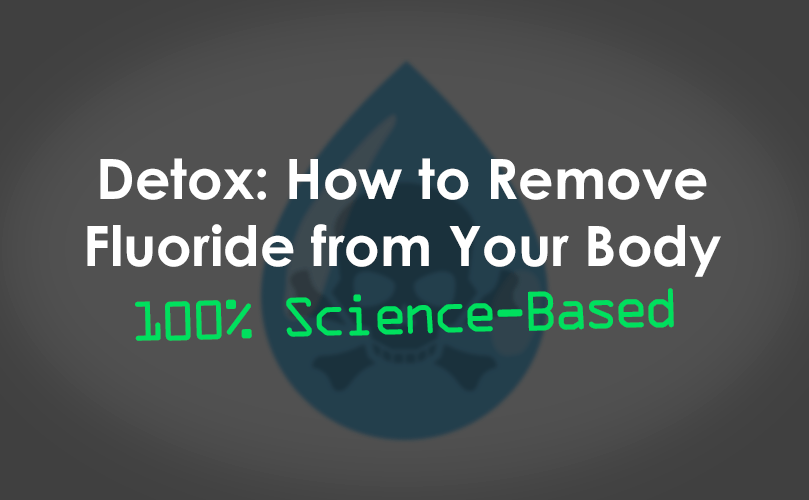
Fluoride Detox: How to Remove the Toxin from Your Body (100% Science-Based)
Written by: Gene Fitzgerald // Last Updated: Feb 2, 2023
This page may contain affiliate links. If you buy a product or service through such a link we earn a commission at no extra cost to you. Learn more.
Fluoride is a known neurotoxin with severe health effects, but it is still being added to our water supplies all across the country.
And fluoridated tap water is only the tip of the iceberg. Excessive fluoride can be found in many foods, toothpaste, cookware, medications…
If you can no longer tolerate this situation, this post will help you with 2 things:
Fluoride in Our Bodies
Does fluoride accumulate in the human body? And if so, where is it stored and for how long?
Brushing your teeth with fluoridated toothpaste, drinking fluoridated water, and eating foods rich in fluoride are just 3 of a multitude of factors that determine how much of the neurotoxin you ingest on a daily basis.
An oversupply of fluoride can lead to serious health issues including:
- Skeletal fluorosis
- Muscle disorders
- Impaired thyroid function
- Bone cancer
- Cell death[1]
The neurotoxin has even been linked to causing a decline in cognitive abilities.[2]
About half of the fluoride that your body absorbs gets stored in your body tissue. Usually, the remaining 50% is flushed out via urine within 24 hours provided that you have healthy and properly functioning kidneys.[3,4,5]
However, how well the urine excretion works and the extent to which absorbed fluoride is retained in your body also depends on your urine’s pH level (and under some conditions flow rate). More acid urine means an increase in fluoride retention.[6]
As a result, direct influencing factors for fluoride urine excretion are
- your diet,
- drug use,
- and metabolic as well as respiratory disorders.[7]
The vast majority of fluoride that your body stores – 99% to be precise – accumulates in calcified tissue, meaning your bones and teeth.[3] The remaining 1% ends up in soft tissues, which includes your brain and more importantly the pineal gland (more on this below).
In bones, fluoride binds to calcium phosphate compounds. Over a whole lifetime, relatively high levels of fluoride can deposit in your skeleton this way, which may result in joint pain and stiffness sometimes confused with arthritis.[8]
The good news is that this process is reversible, as fluoride can be mobilized through bone remodeling.[3] The less fluoride is already stored in your skeleton, the better.[5]
FYI: Bone remodeling is a “process where mature bone tissue is removed from the skeleton (…) and new bone tissue is formed“. (Wikipedia) In adults, about 10% of the entire bone structure is remodeled within one year.[9]
Fluoride and the Pineal Gland
A study conducted by the University College of Sciences (Osmania University) in Hyderabad, India has shown that an increase in the concentration of sodium fluoride in drinking water fed to rats directly led to an increase of fluoride deposition in their brain tissue.[10]
But even more affected by fluoride overload than our brain is a tiny organ called pineal gland. The pineal gland sits between the two hemispheres of your brain completely unprotected by the blood-brain barrier. Its task is to produce and secrete melatonin, for example to promote sleep.
License by Cancer Research UK uploader
Due to the fact that the pineal gland has a rich blood supply and is a calcifying tissue, it too can accumulate fluoride. In fact, researchers have found higher fluoride-to-calcium concentrations in the pineal glands of fluorosis patients that had died in old age, than concentrations found in their bones.[11]
Calcification of the pineal gland as a consequence of ingesting too much fluoride can lead to poor melatonin production over time, a possible cause for sleep disorders, fatigue and depressions.
How to Detox from Fluoride
Now that we know why it’s important to get fluoride out of our bodies, the question remains how to remove it.
Watch Your Diet
As mentioned above, the retention of fluoride in your body is dependent on the pH level of your urine. Higher acidity results in less fluoride being flushed out of the system. And because your diet has the biggest influence on your body’s acid-base balance, you have to make it a priority to eat more alkaline than acidic foods – at least most of the time.
What are alkaline foods? All sorts of vegetables, most raw fruits (not juices), some beans & nuts, and most oils. What you should try stay away from is too much coffee and black tea, meat, fish, eggs, syrup, soy sauce, vinegar and alcohol.
As a general rule, it’s probably easiest if you prefer raw over processed foods.
Exercise
It’s funny: While daily exercising may reduce the negative effects of too much fluoride intake on blood sugar regulation[12], acute and overly intense training seems to result in a rise of fluoride concentration in blood and simultaneously a decline in renal clearance and urinary excretion.[13]
What does this mean for your fluoride detox?
- Regular work outs are helpful.
- Going too intense might be detrimental.
Supplements
In the context of fluoride detox, a number of supplements are supposed to boost urine excretion. The following is a complete list of those that are scientifically proven to work.
Boron (Borax)
The element boron has shown to help with skeletal fluorosis[14] and is essential for healthy bones and joints.[15]
According to research, ingesting 5-6 mg per day is the optimum amount for arthritis prevention even in old age.[16]
It can be found in many organically grown foods including all sorts of nuts, especially almonds, hazelnuts and peanuts, grapes, apricots, prunes, dates, kidney beans, chickpeas and lentils.
Now, some people might prefer to supplement their diet to ensure sufficient daily boron intake. One of the most popular supplements: Borax, a rare but naturally occurring mineral that contains boron and acts as a defluoridating agent that leaches fluoride from your body.[14]
Of course, most people know borax as a multipurpose cleaner and detergent booster. Multiple online sources say that you could simply mix between 1/32 to 1/4 teaspoon of pure borax with a quarter gallon (1 liter) of water and sip that cocktail in small portions throughout the day. A pinch of sea salt is supposed to bring even better results.
However, we want to distance ourselves from these claims, not because we believe that borax won’t help with fluoride detoxification, BUT…
- we do not want to make false statements about the purity of any random borax product taken from the supermarket shelf. Not all of them are of food-grade quality.
- in the borax study, test subjects were treated with 300 to 1,100 mg of borax per day for a period of 3 months with good results. However, the scientists also concluded that “Additional studies are necessary to (…) determine whether high doses of borax can be administered to humans over an extended period without causing subtle adverse effects to liver and kidneys“. (Source)
- The FDA has declared borax illegal for use in foods.[17] The European Chemical Agency has classified the mineral as reprotoxic.[18]
What happens if you suffer from a boron overdose?
In excess, boron can have harmful effects as it inhibits a number of enzymatic activities in the human organism. How much is too much? According to research, negative side effects can start to occur in the lower gram range, which is many, many times more than what you can ingest with a normal diet – even if you add a supplement.[16]
Tamarind
Too much fluoride can cause metabolic disorders.[19,20] So it’s good that in a 2012 study, scientists found that tamarind leaf powder helped to restore carbohydrate, lipid and antioxidant metabolism in rats that were exposed to high levels of fluoride in drinking water.[21]
Another study – this time with humans – has shown that tamarind intake (10g daily) leads to a significant increase in fluoride excretion via urine.[22]
Tamarind has been used in Ayurvedic medicine for ages. Pulp, bark, seeds, fruits and leaves can be turned into teas, powders & spices, extracts and tinctures.
Curcumin (Turmeric)
Curcumin is what gives the spice turmeric its yellowish color. It is also known as an anti-inflammatory powerhouse.
What’s more, when ingested in high enough dosages it seems to have a neuroprotective effect. In an experiment with mice, curcumin supplementation has shown to significantly reduce the toxicity of fluoride and its brain-damaging effects.[23]
Other studies have shown that curcumin treatment is likely to protect your kidneys from harm caused by fluoride overload and prevent genotoxic effects, meaning damage caused to your genetic material such as DNA. Damaged genetic material is what leads to mutations and possibly cancer.[24,25]
Our recommendation: Add raw turmeric or turmeric/curcumin powder to your meals, juices and smoothies.
Iodine
Iodine is highly important for our bodies. It plays a major role in cell metabolism and is needed for the production of thyroid hormones. Supplementation with iodine clearly results in increased urinary excretion of fluoride.[26].
What’s more, fluoride in drinking water is less toxic when accompanied with sufficient iodine intake.[27]
At the same time, you want to watch out because too much iodine can do more harm than good. Especially those with a pre-existing thyroid disease have an increased risk of developing a thyroid dysfunction. The same goes for the elderly, babies and fetuses.[28]
All in all, the recommended daily amount of iodine intake for adults is 150 μg.
If you struggle with reaching this threshold, consider adding more sea fish and sea vegetables – think kelp or wakame – to your diet. Other iodine-rich foods are eggs, beans and potatoes. As a last resort, check out iodine supplements which are widely available and relatively inexpensive.
Vitamin C
A study with fluorosis patients suggests that, even in excessive dosages, vitamin C has no influence on urinary fluoride excretion.[29]
However, similar to curcumin, vitamin C might help to prevent your kidneys from being harmed by too much fluoride intake.[24]
The best natural vitamin C sources? Try acerola, kale, kiwis, broccoli, lemons, …
Selenium + Zinc
In an animal study, selenium has proven to be an “antidote agent against fluorosis” protecting the brain of mice against the adverse effects of sodium fluoride in their drinking water.[30]
What’s more, a second study has shown that supplementing rats exposed to fluoridated drinking water with a combination of zinc sulfate and sodium selenite (contains selenium) could counteract kidney damage.
Interestingly enough, the two antioxidants are more effective when administered together than alone.[31]
Great sources for selenium are brazil nuts and more or less all sorts of sea fish and meat.
Zinc can also be found in meat, fish and nuts and in addition to that seeds.
Calcium + Magnesium
Typically between 70 to 90% of the fluoride that you ingest is absorbed in your intestines. The exact percentage depends on the form of fluoride. For highly soluble sodium fluoride, almost 100% is absorbed.
The good news is that you can reduce this percentage by adding more calcium and magnesium to your diet[32,33]. Lower calcium and magnesium intake results in enhanced fluoride absorption.
Where to find magnesium and calcium? Avocado, nuts, seeds, fish, whole grains, bananas and leafy greens.
Chelation Therapy?
The goal of a chelation therapy is the detoxification of heavy metals. Fluoride, however, is a salt. Whether or not chelation has any impact on fluoride content in the body, we do not know. We couldn’t find any scientific research for or against it.
Liver Cleanse?
One of the many functions of the liver is to break down toxic substances. It is the most important organ for the detoxification of our bodies. Still, if so called “liver cleanses” really help with fluoride detox remains to be proven.
Saunas?
Dry Saunas are supposed to release sodium fluoride stored in fatty tissues. But according to our research, there is no such thing as fluoride in fatty tissue, so…
Detox Side Effects
Many online sources say that detoxing from fluoride can cause symptoms such as headaches and sluggishness. Of course, they might speak from personal experience. At least we couldn’t find any scientific data to support these claims.
Nonetheless, it makes perfect sense to drink plenty of unfluoridated water while detoxing to ensure that all excessive fluoride can be flushed out.
How to Avoid Fluoride In the First Place
Even better than detoxing is to reduce your exposure to fluoride to a minimum to stop it from accumulating in your bones, teeth and brain over time.
Here are our 7 tips for how to avoid fluoride in the first place:
1. Drink Non-Fluoridated Water Only
This one is the most obvious of course. You want to stay away from fluoridated water, which includes most tap water and also some bottled water (even some spring water brands).
To find out if your tap water is enriched with fluoride, follow this link and choose your state from the dropdown menu and hit “GO” (or click on the map).
Please note: Unfortunately, not all states participate in the database. If that’s the case for your state, it’s best to contact your provider directly and ask about fluoride.
On the next page, choose the county you live in and look for your supply system in the table.
In the second column it says “Fluoridated” – “Yes” or “No”. If it says “No”, at least you don’t have to worry about added fluoride!
If it says “Yes”, click on the name of the system to further check how much is added. Oftentimes that’s 0.70 mg/L – the minimum amount recommended by the U.S. Department of Health and Human Services. The recommended maximum is 1.2 mg/L.[34]
Fluoride occurs naturally in surface and groundwater. That’s why we recommend you take this one step further and also check your water supply system for natural fluoride content. How can you do that?
Either use the EWG’s Tap Water Database or contact your supplier directly and ask for the latest water quality report, which by the way are always free!
In case you are on well water, you have to take a direct sample and have it tested for fluoride by a professional lab.
No fluoride is added to your water and none was found in recent tests? Great! It looks like you can drink straight from the tap without having to worry about the neurotoxin. But remember that it’s still possible that there are other harmful contaminants lurking in your water!
You receive fluoridated tap water or there’s natural fluoride contained in it? Then you have a couple of options going forward:
- You apply a specialized water filter. Why specialized? Because regular water filters based on activated carbon medium are completely ineffective against fluoride, such as Brita and PUR filter pitchers. Most reverse osmosis filter systems remove at least 95% F–. Another option are filters working with activated alumina or anion exchange resin. Your last option is to use a water distiller. You can learn more about each filter type in our Guide: 12 Best Fluoride Water Filters in 2024 – Reviews & Buying Guide.
- You opt for purified, non-fluoridated bottled water, which you should find in every grocery store. Look out for labels that say “distilled water” or “purified by reverse osmosis“. In case fluoride was added to the water, it must be declared on the label[35]. The problem with bottled water, however, is that just like plain tap water, it might contain harmful impurities other than fluoride.
2. Eat Unprocessed Organic Foods
Reducing the amount of fluoride you ingest on a daily basis by choosing fluoride-free drinking water is one part of the equation. In addition, there are other simple steps you can take to reduce your overall exposure in everyday life significantly. One of them is eating organic.
Why does eating organic make a difference? Because pesticides and insecticides used in conventional agriculture oftentimes contain fluoride, such as the mineral cryolite.[36] This is how these substances can end up on our dinner plates[37] – or glasses in the case of wine.[38]
On top of that, processed food is more likely to contain fluoride in general. This likelihood increases with every processing step.
One the one hand, this has to do with the potential use of fluoridated water (and salt) when producing bread, infant formula, fruit juice, soy milk and beer for example.
On the other hand, fluoride is often used to preserve canned food. You should also avoid food containing mechanically separated chicken (MSC). MSC is often high in fluoride, which has to do with the separation process that often results in bone particles in the final product. These bone particles are the fluoride source.[39]
MSC is one of the ingredients in some infant foods, toddler foods and canned meats.
By the way, if you’ve had enough of vegetable salad for this week, at least make sure to carefully read the label of any processed food you pick. What does the ingredient list say?
Also, you can find a list of processed foods highest in fluoride here.
Lastly, always use regular instead of fluoridated salt.
3. Reduce Green & Black Tea + Coffee
Green and black tea almost always contain high amounts of fluoride, so you shouldn’t drink too much of it.[40,41]
The same goes for some species of coffee.[42]
4. Use Fluoride-Free Toothpaste
Don’t buy fluoridated toothpaste especially when you have small kids. Our little ones don’t have a well-developed swallowing reflex yet. They tend to swallow a lot of toothpaste while brushing.[43] Of course, the same applies to gels, mouthwashes and other dental products.
As an alternative, you can brush with fluoride-free toothpaste, sea salt, tooth powder made from herbs, or toothpaste soap.
You also should not get a fluoride get treatment at your dentist. The gel contains extremely high amounts of fluoride.
5. Don’t Use Teflon Coated Cookware
Avoid pans, pots and other cookware with Teflon coatings. Teflon contains fluoride which has shown to leach into water during cooking, but also when used for storage.[44]
6. Try to Avoid Medications Containing Fluoride
Make sure that medications you take are free from fluoride. If not, you can always ask your physician for a suitable alternative. You can find an index of fluorinated pharmaceuticals here.
7. Showering & Bathing?
When showering or bathing, can your body absorb fluoride via the skin or through inhaling? Truth be told, we don’t know.
What we know is that fluoride is not as volatile as chlorine meaning that at least you won’t inhale as much of it.
Still, if this is something that’s bothering you, the best solution is to buy a shower or whole house fluoride water filter, which you can learn more about here.
Detox FAQ
- How long does the detox take?
That differs from one person to another and is impossible to predict. Theoretically speaking, it depends on how much fluoride has accumulated in your body over the years. If you really want to know, you’d have to measure how much fluoride is contained in your urine. Once you see a drop, all redundant fluoride might have left you body – but that’s just a theory! - Is it safe to detox while being pregnant?
We really don’t know. Adding some curcumin or tamarind to your diet probably won’t hurt, but definitely see your doctor before you make any radical changes. - How long to detox before pregnancy?
Again, it’s most likely that this depends on how much superfluous fluoride is stored in your body. The more there is, the longer the detox is going to take. But what’s more important is that you avoid too much fluoride exposure while you are pregnant. Studies have shown that the placenta not only accumulates fluoride[48], it also allows rapid diffusion of fluoride from mother to fetus and does not act as a barrier.[45][46][47] - Does cinnamon detox fluoride from my body?
Not that we know of. - Does vitamin c in bathwater help to detox fluoride?
As far as we know, your skin can’t absorb vitamin C, so the answer is no. - Does alkaline water benefit fluoride detoxification?
It might be possible. What we know for sure is that fluoride excretion works best when urine is only mildly acidic. The higher the acidity, the more fluoride is retained in your body. (See above) - Can you defluoridate water using Tulsi (holy basil)?
No idea. There are studies saying that tulsi is an effective fluoride absorbent.[49] Other research suggests the opposite.[50]
References
- [1] https://www.mercola.com/infographics/avoid-fluoride-exposure.htm
- [2] https://ehp.niehs.nih.gov/doi/full/10.1289/ehp.1104912
- [3] https://www.nap.edu/read/2204/chapter/10#131
- [4] https://www.amjmed.com/article/S0002-9343(70)80062-6/fulltext
- [5] http://www.euro.who.int/__data/assets/pdf_file/0018/123075/AQG2ndEd_6_5Fluorides.PDF?ua=1
- [6] Clinical Environmental Medicine: Identification and Natural Treatment of Diseases Caused by Common Pollutants, Walter J. Crinnion, Joseph E. Pizzorno
- [7] https://www.nap.edu/read/2204/chapter/10#132
- [8] https://fluoridealert.org/issues/health/arthritis/
- [9] http://www.wheelessonline.com/ortho/bone_remodeling
- [10] https://www.ncbi.nlm.nih.gov/pubmed/24024668
- [11] http://www.fluorideresearch.org/314/files/FJ1998_v31_n4_p175-250.pdf
- [12] https://www.ncbi.nlm.nih.gov/pubmed/23660080
- [13] https://www.ncbi.nlm.nih.gov/pmc/articles/PMC4652279/
- [14] http://www.fluorideresearch.org/201/files/FJ1987_v20_n1_p001-050.pdf
- [15] https://www.ncbi.nlm.nih.gov/pmc/articles/PMC1566627/pdf/envhper00403-0084.pdf
- [16] https://arthritistrust.org/wp-content/uploads/2013/03/OsteoporosisPreventionAndTreatment.pdf
- [17] https://www.fda.gov/food/ingredientspackaginglabeling/foodadditivesingredients/ucm091048.htm
- [18] https://echa.europa.eu/information-on-chemicals/annex-iii-inventory/-/dislist/details/AIII-100.129.152
- [19] http://www.eurekaselect.com/78776/article
- [20] https://www.sciencedirect.com/science/article/pii/S0009279710004631?via%3Dihub
- [21] https://www.ncbi.nlm.nih.gov/pmc/articles/PMC3493631/
- [22] https://www.nature.com/articles/1601287
- [23] https://www.ncbi.nlm.nih.gov/pmc/articles/PMC3969660/
- [24] https://www.ncbi.nlm.nih.gov/pubmed/21901432
- [25] https://www.ncbi.nlm.nih.gov/pubmed/20170701
- [26] https://healthcentre.nz/articles/Iodine-supplementation-markedly-increases-urinary-excretion-of-fluoride-and-bromide.pdf
- [27] https://www.nap.edu/read/11571/chapter/10#227
- [28] https://www.ncbi.nlm.nih.gov/pmc/articles/PMC3976240/
- [29] https://www.ncbi.nlm.nih.gov/pubmed/1190102
- [30] https://www.ncbi.nlm.nih.gov/pubmed/20143719
- [31] https://www.ncbi.nlm.nih.gov/pubmed/12725034
- [32] https://www.nap.edu/read/11571/chapter/5#90
- [33] https://www.ncbi.nlm.nih.gov/pubmed/3572562
- [34] https://aspe.hhs.gov/hhs-recommendation-fluoride-concentration-drinking-water-prevention-dental-caries
- [35] https://www.accessdata.fda.gov/scripts/cdrh/cfdocs/cfcfr/CFRSearch.cfm?fr=165.110
- [36] https://en.wikipedia.org/wiki/Cryolite
- [37] https://archive.epa.gov/pesticides/reregistration/web/pdf/0087fact.pdf
- [38] https://www.ars.usda.gov/ARSUserFiles/80400525/Data/Fluoride/F02.pdf
- [39] https://ir.library.oregonstate.edu/concern/graduate_thesis_or_dissertations/0g354k68t
- [40] https://www.ncbi.nlm.nih.gov/pmc/articles/PMC4808922/
- [41] https://www.ncbi.nlm.nih.gov/pmc/articles/PMC5497633/
- [42] https://www.ncbi.nlm.nih.gov/pmc/articles/PMC5589785/
- [43] https://www.ncbi.nlm.nih.gov/pmc/articles/PMC5651468/
- [44] https://pdfs.semanticscholar.org/92a9/f2b9a8475e381cd949eaf6fe74be8aa077af.pdf
- [45] https://www.ncbi.nlm.nih.gov/pubmed/8040692
- [46] https://www.ncbi.nlm.nih.gov/pubmed/7188719
- [47] https://pdfs.semanticscholar.org/a7dd/7be10946e8cc8ecb7f7b2d502b8ba0d1d865.pdf
- [48] http://njirm.pbworks.com/f/3Role+of+Placenta+to+combect+flurosis.pdf
- [49] https://www.ncbi.nlm.nih.gov/pmc/articles/PMC4963777/
- [50] http://www.recentscientific.com/sites/default/files/download_55.pdf
If you found this article helpful, please share it with your family and friends, so they get the chance to learn how to do a proper fluoride detox, too. And if you have any questions or comments, please share them below!
Information provided on BOS is for educational purposes only. The products and services we review may not be right for your individual circumstances.
We adhere to strict editorial guidelines. Rest assured, the opinions expressed have not been provided, reviewed, or otherwise endorsed by our partners – they are unbiased, independent, and the author’s alone. Our licensed experts fact-check all content for accuracy. It is accurate as of the date posted and to the best of our knowledge.
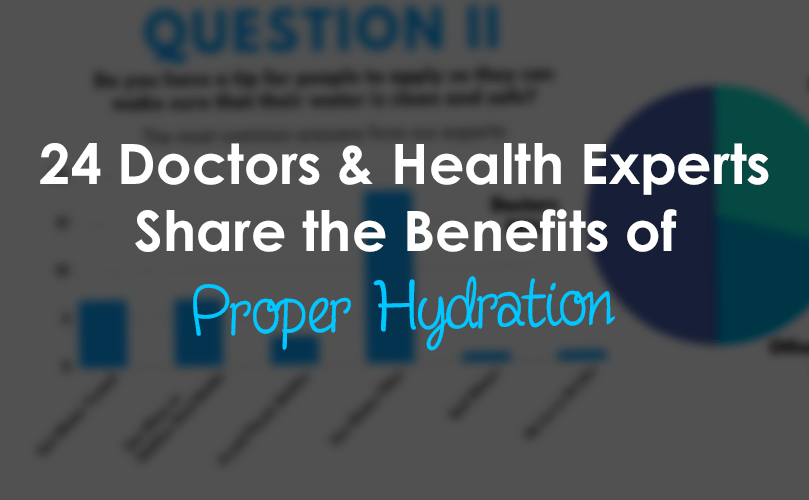
24 Doctors & Health Experts Share the Benefits of Proper Hydration + How to Get Clean Water
Written by: Gene Fitzgerald // Last Updated: Feb 2, 2023
This page may contain affiliate links. If you buy a product or service through such a link we earn a commission at no extra cost to you. Learn more.
The benefits of drinking enough water throughout the day? This seems pretty obvious, right? Well, yes and no.
- Yes because everyone kind of knows that staying hydrated is important in order to feel good and avoid headaches – stuff like that.
- No because there are many more benefits to proper hydration (according to our experts), some of which we are convinced you weren’t aware of until now.
Also, to make everything a little more interesting, we asked our experts to give us their top 3 benefits of drinking enough water. This is how we received a multitude of different answers, which shows that varying focal points combined with years of experience lead to different emphases.
Question 2 covers tips that you can apply to ensure that the water you drink is clean and safe at all times.
So without further ado…
A Quick Analysis
Let’s break down this roundup real quick to give you an overview of our baseline and findings.
1. Experts
First, our experts: We could convince 12 doctors, 7 nutritionists and 5 other health experts to participate.
2. Findings Question I
Here is a statistical analysis of the 10 most common answers for our first question: “What are the top three health benefits of drinking enough water throughout the day?”
And we received even more different answers than that – interesting, isn’t it?
Of course, this does not mean that only a handful of our experts are right while all the others are wrong. In fact, due to the nature of our question, there really is no right or wrong here.
By the way, is there a difference between what only the doctors said versus the answers from our nutritionists & co.?
Looks quite similar. The biggest contrast was that the doctors weighted drinking enough water more important to prevent kidney damage. According to the other expert group, one of the top 3 benefits you get from proper hydration is cardiovascular health.
3. Findings Question II
Second question: “Do you have a tip for people to apply so they can make sure that their water is clean and safe?”
Almost all experts said that you should be using a water filter, for example a reverse osmosis filter system, if you are concerned about the quality of the water you are drinking. This also includes having your water tested and using a glass or stainless steel water bottle instead of plastic when you are on the go to avoid recontamination.
Boiling water was mentioned only once.
Over to the Experts
Dr. Chirag Shah – Accesa Labs
Question I: Top 3 Health Benefits
Our bodies are >50% water and drinking water is essential to our survival. Some health benefits of drinking enough water are:
1. Keeps our minds sharp.
Our brains depend on adequate blood flow to function properly. Blood flow to the brain is governed by our blood pressure which is related to the amount of water that we drink. If we don’t drink enough water, our blood pressure can decrease for periods of time, reducing the blood flow to the brain.
Without adequate blood flow, our brains do not perform optimally, sometimes resulting in symptoms like a brain fog or trouble concentrating or even more severe symptoms such as fainting.
2. Detoxifies our body.
Our kidneys filter the blood in our body. The product of this filtration is urine, and urine is one way we release excess electrolytes and toxins from our bodies. If we don’t drink enough water, the pressure of the blood flow through our kidneys is diminished, reducing the ability of the kidneys to filter out toxins from the blood. Drinking clean water is one way to improve our intrinsic detoxification processes.
3. Keeps our skin and joints healthy.
Water is an important component of both the insides of cells and the spaces around them. Water helps cushion and lubricate our joints, allowing them to slide and bend more easily. Also, water helps to improve the elasticity of our skin, making it look young and healthy.
4. Helps us regulate body temperature.
Breathing and sweating, for example, are ways that we cool ourselves off using water from our diet. Without enough water, it can be challenging to regulate our temperature optimally.
Question II: Tip(s) for Clean & Safe Water
While it is impossible to know how pure any source of water is without extensive lab testing, using a water filter is a way to improve your water quality. There are a number of filters – from portable ones designed for camping to larger water filters that you can put on your faucet or in your refrigerator – on the market. If you have concerns about the quality of your water, get a high-quality water filter and put it to use.
Dr. Rob Raponi – MSK Naturopathic
Question I: Top 3 Health Benefits
1. Immune boosting
Our immune system is more than just antibodies. Any barrier to the outside world is considered a valuable part of our immune system. Proper hydration ensures adequate production of saliva and keeps our skin from getting dry. Saliva can actually trap potential pathogens and kill them off before they even make it into our bodies.
Not drinking enough water leads to a drier mouth, allowing for more opportunity for illness! Same with dry skin. More cracks in the skin lead to more compromise in this wonderful barrier allowing pathogens to enter our bodies more easily.
2. Bowel movements
Fibre often gets the spotlight when it comes to keeping your movements regular but more often than not, we are often lacking enough water to keep the stool soft and moving through our system. All fibre and no water can actually back us up. Make sure to drink enough water to keep things flowing and you’ll even notice a bit of trimming around the waist!
3. Lose weight
We sometimes mistake our bodies cues for thirst and hunger. Drinking enough water throughout the day can actually lead to less calorie consumption. Staying properly hydrated can help us lose weight since reaching for a nice glass of water over a snack has quite the caloric advantage.
Question II: Tip(s) for Clean & Safe Water
Water sources are important but not everyone can always implement expensive filters. Reverse osmosis systems are great, however how we handle our water once it leaves the tap is just as important.
My biggest tip that will help the most people would be to invest in a nice glass or stainless steel water bottle as opposed to plastic. Plastic can leach chemicals into our water and when heat is applied this effect is amplified. Try to make sure the water you do consume stays as clean as it was intended when you hydrate throughout the day!
Rachel Daniels – Virtual Health Partners
Question I: Top 3 Health Benefits
1. The gold standard for hydration is to drink water throughout the day. When vigorously exercising outside, drink water with electrolytes to replenish what you are losing with sweat
2. Drinking water keeps your body satisfied, helps you to avoid stomach discomfort, and prevents peaks and dips in blood sugar and energy levels that may occur when consuming sugary beverages.
3. Drinking plenty of water gives your skin a radiant, healthy, younger-looking complexion. Water may also fend off breakouts by decreasing the concentration of oil on your skin.
Question II: Tip(s) for Clean & Safe Water
It’s important to remember general healthy habits when it comes to hydration and to avoid sugary beverages, like lemonade, juices, sodas and sports drinks. Iced coffee and iced teas are also appealing, but the caffeine in these drinks makes you lose more water and if you are not compensating appropriately can lead to dehydration.
Carbonated (unsweetened) waters can be a part of your overall hydration intake, but keep in mind that the bubbles may make you feel fuller or cause some bloating that will prevent you from drinking enough fluids, especially during exercise.
Try filtered water with some fresh fruit, vegetables, and herbs for a refreshing flavor combo of your choice to make sure your water is clean and safe.
Dr. Jennifer Haley
Question I: Top 3 Health Benefits
A few benefits of drinking water from my perspective:
1. Water keeps skin hydrated and supple. Improves the appearance of skin firmness.
2. Dilution is the solution to pollution. Drinking water helps remove toxins from the skin – this results in an improved glow and health of the skin as well as a reduction in the appearance of cellulite.
3. Drink water only. Drinking artificially colored and flavored drinks is toxic to your body and skin. Your body spends so much energy trying to remove these chemicals to extract plain water that can be used for every necessary metabolic process in the body.
Using those resources to detoxify food and drinks to obtain the necessary nutrients takes away from the natural repair and regeneration mechanisms we all need to stay healthy.
Question II: Tip(s) for Clean & Safe Water
Never use plastic bottle as plastic chemicals (even BPA-free) leach into the water and cause toxicity and endocrine disruption. I recommend carrying around a reusable glass or stainless steel water bottle and reusing it throughout the day. It is better for the environment, also!
I don’t agree with fluoride in the water as this can severely damage the thyroid and lead to permanent thyroid destruction. I personally use a double filtered British Berkey system at home and work to remove heavy metals, fluoride, and chlorine.
Dr. Will Cole
Question I: Top 3 Health Benefits
1. Drinking water is necessary as over half our body is comprised of water making it an essential part of our overall health and body function including proper circulation, regulation of body temperature, along with digestion and absorption of nutrients.
2. Not only that, drinking at least 8 cups of water per day has been shown to burn an extra 20,000 calories every single year.
3. Making sure we drink enough water also prevents dehydration which can impact our physical appearance and contribute to wrinkles and dull skin.
Question II: Tip(s) for Clean & Safe Water
You can get a copy of your local water quality report as well as running a test yourself to see what exactly is in your water. Once you do that, it is important to pick a quality water filtration system. There are many kinds available that vary on price, quality, and type of filter that you are looking for.
Dr. David Hefner – MedExpress
Question I: Top 3 Health Benefits
1. I always remind my patients that when they drink the recommended amount of water per day – at least eight 8-ounce glasses – they’ll likely experience physical, mental and emotional benefits.
2. People who drink plenty of water every day will feel physically stronger – whether they’re sitting at a desk all day or are hitting the pavement for a long run. That’s because proper hydration helps lubricate joints, which can keep you feeling fit and pain-free, no matter your activity.
3. Drinking water frequently throughout the day can benefit you mentally, too.
Dehydration can cause brain tissue to shrink, which can result in lack of focus, low energy and fogginess. But staying hydrated can help keep you focused for longer periods of time. You may also feel more energetic – in fact, feeling tired or drained is often the first sign of dehydration.
Sometimes when you’re dehydrated, you might experience mood swings and changes in emotion – for seemingly no reason. That’s because dehydration can often have neurological impacts that cause feelings of confusion, frustration and more. Next time you catch yourself suddenly feeling irritable in a meeting, try getting back on track with a glass of water.
Question II: Tip(s) for Clean & Safe Water
I always tell my patients to talk to their water company representative. Water companies are required to monitor and report all possible contaminants that may affect the quality of the water they supply. As an added layer of protection, my family uses an in-home water filtration system. Some systems are in the form of a pitcher, while others attach directly to your sink nozzle. Some systems even protect the home as a whole.
When you’re out and about, I always prefer to opt for bottled water. To help eliminate plastic waste, carry around a reusable water bottle that you can fill up whenever you come across a filtered water fountain.
Jerry Snider – All In Health and Wellness
Question I: Top 3 Health Benefits
Hydration is a huge key to exercise and life in general.
1. Proper hydration helps the body operate efficiently.
Blood flows better, organs work better, etc. Obviously very important during bouts of exercise.
2. Keeps you awake and focused.
Drinking water first thing in the morning is very important as you dehydrate as you sleep. It then wakes up your cells, including your brain which helps with focus and clarity.
3. Many people mistake the feeling of dehydration for hunger pains. Being properly hydrated helps in the prevention of over-eating.
Question II: Tip(s) for Clean & Safe Water
Always filter your drinking water.
I personally stay away from bottled water as several add sodium to extend the shelf life. Carry a liter or so refillable bottle with you everywhere which will encourage you to drink.
Tina Marinaccio – Health Dynamics
Question I: Top 3 Health Benefits
Water is essential for athletic performance.
A mere 2% water weight loss from sweating significantly decreases athletic performance.
Weigh yourself before and after physical activity, then drink 16oz to 20oz per pound lost to rehydrate. This is likely more than just quenching your thirst. Your taste buds will tell the brain to stop drinking before the cells are fully rehydrated, so measure your fluids.
2. Water is critical to proper digestion.
Fluid losses and dehydration increase the risk for constipation. Fluids are needed to keep blood pressure from dropping, and to efficiently move toxins and compounds through the body for excretion by the kidneys.
Without adequate hydration, the kidneys can get damaged from the higher concentration of solutes running through the tiny filtration units called nephrons.
Question II: Tip(s) for Clean & Safe Water
Tap water can be loaded with contaminants.
Check with your local water authority to compare their testing with acceptable standards. The Environmental Working Group (EWG) website will also provide this information to you by searching your zip code.
Once you know the potential contaminants, EWG can help select the appropriate water filtration system type for you.
Allison Childress, Ph.D. – Nutritional Sciences
Question I: Top 3 Health Benefits
The benefits of drinking more water are:
1. Higher levels of energy and brain function
Our bodies are made up mostly of water and therefore require water to perform optimally in every area.
2. Can help you lose weight
Most of the time when we think we’re hungry, it’s really our bodies telling us that were dehydrated. By drinking plenty of water, we’ll feel more satiated throughout the day and it can also help increase our metabolic rate.
3. Water greatly impacts our digestive system
Drinking enough water helps prevent constipation and helps relieve some of the burden on our kidneys and liver by helping to flush out waste products.
Question II: Tip(s) for Clean & Safe Water
If you live in a place with a public water supply then the water is most likely safe. However, if you don’t have access to public water, or are worried your water might not be clean, the easiest way to tell would be to get a sample of it tested at a certified lab.
Dr. Carla Cork
Question I: Top 3 Health Benefits
1. Water, as everyone knows, is essential to daily living. We need it to keep our cells functioning properly which govern all our organs.
2. Being properly hydrated reduces one’s incidence of headaches, fatigue, overheating, muscle cramps, constipation, and renal stone formation.
3. One should drink at least 8 ounces of water before each meal to keep from overeating, as the thirst and hunger centers in the brain are right next to each other. Often times, we feel hungry and we really are dehydrated and need more fluids, namely water.
Question II: Tip(s) for Clean & Safe Water
When camping or traveling outside the country, consume only bottled water. Also, do not ask for ice in other beverages as the ice may come from an unclean water source.
Dr. Taylor Arnold – Southwest College of Medicine and Medical Center
Question I: Top 3 Health Benefits
This is a tough one because there are just SO MANY benefits to drinking water.
1. Drinking adequate water can help prevent symptoms of dehydration such as headaches and dizziness.
2. Adequate water can help prevent constipation, or possibly alleviate it in those who aren’t drinking enough water.
3. Drinking enough water can help keep our kidneys, skin, and heart healthy, as well as help support optimal cognitive performance.
An easy marker to help you determine if you are drinking enough water? Check if your pee is clear!
Question II: Tip(s) for Clean & Safe Water
Check with your city if you are concerned about water safety. They should have reports with information about contaminants.
Make sure you are selecting BPA-free water bottles, or are using stainless steel or glass bottles.
If you are in the path of hurricane Florence, make sure you stock up on at least 2 weeks worth of bottled water for each family member (including pets).
Megan Casper – Nourished Bite Nutrition
Question I: Top 3 Health Benefits
Since water is such a big part of our bodies, it’s easy to see that it does a lot.
1. It regulates body temperature, flushes waste and toxins, acts as a shock absorber, prevents and helps with constipation, helps dissolve and transport nutrients, aids red blood cells to deliver oxygen and so much more. Being dehydrated by even 1% can make you fuzzy headed, forgetful and less alert.
2. And water doesn’t just impact what’s inside us – it also can also help keep skin plump (aka more youthful).
3. Aid in weight loss. Drinking 2 glasses of water can increase metabolism (one study found about 25% for an hour) and also reduces the number of calories eaten when consumed before a meal. This simple tip works in two ways. Thirst can mask itself as hunger, causing you to eat more and water makes you feel fuller, causing you to eat less during a meal.
Tips to Drink More Water:
Make drinking water a treat by adding flavor. By mixing up your flavors you’ll never feel like you’re “just” having water. Try adding:
- Fresh fruit like a slice of lemon, lime or orange or crush up fresh berries
- Veggie slices like cucumber or ginger
- Herbs like mint or lavender
Other drinks count too! Make a spritzer with soda water and a splash of juice or reach for a simple herbal tea. Coffee counts too. While caffeine is a diuretic (aka: it dehydrates you), it’s been found that the water in coffee outweighs the loss.
If you drink a glass of water with every meal or snack you’ll need only a few more glasses each day to reach your daily goal.
Get a large water bottle and carry it with you. It’s much easier to stay hydrated if your bottle is nearby and you’ll know exactly how much you’ve had for the day and can stick to your goals. I recommend buying a 32-ounce water bottle and drinking one by the end of lunchtime and another by bedtime.
Go high tech by either tracking your water intake on your phone or buy a water bottle that will send you a reminder to drink more.
Eat foods with a high water content. About 20% of our daily water intake comes from food. Some fruits and vegetables, like watermelon, cucumbers, zucchini, melons, and tomatoes, have high amounts of water. As an added bonus you’ll also be ticking off one of your servings of fruits and vegetables for the day, getting some disease-fighting antioxidants, and eating fiber which will help fill you up.
Allison Samon – Health Allie Lifestyle & Wellness
Question I: Top 3 Health Benefits
Top 3 health benefits of drinking enough water throughout the day:
1. It helps to remove toxins and increase energy.
On an average day, you lose about 2.5 liters of fluid, which for most people is replaced by eating or drinking. However, if you exercise, have a very active day, sweat, or if you’re sick (fever or diarrhea), that’s going to cause dehydration. Dehydration causes fatigue and if chronic, kidney disease.
2. Proper hydration decreases stress in your body: headaches, back pain, allergies, weight gain, asthma, high blood pressure, Alzheimer’s Disease — all things associated with being dehydrated.
3. Cellular health/anti-aging.
Water helps cells to replicate properly and heal faster. Your cells will live longer.
Question II: Tip(s) for Clean & Safe Water
My favorite tool is the GoPure Pod. It’s a portable water purifier made with a food-grade diatomaceous earth that I leave in my refillable glass water bottle. 1 pod lasts 6 months. I refill at any water fountain and the water tastes great and I know will be cleansed of sediment and metals that might otherwise found in municipal water.
Dionne Murphy – Workout and Go
Question I: Top 3 Health Benefits
Hydration within the body is as important as oxygen is to the brain. Hydration helps every system within the body to properly function and perform. Drinking fluids, preferably water and consuming foods with high water content are ways to hydrate the body. The main three health benefits of drinking enough water throughout the day are as follows:
- To help fight infections by flushing toxins out of the body.
- To support brain health. The brain is 80% water, which is why it needs to stay properly hydrated.
- To lubricate the spinal cord and joints.
Question II: Tip(s) for Clean & Safe Water
In order to make sure that your water is safe and clean, invest in a water purification system, filter pitcher, water filter, or use water quality test strips.
Darian Carrow – Consumer Safety
Question I: Top 3 Health Benefits
As our bodies are 60% water, give or take, it is very important to drink the recommended eight, 8-ounce glasses of water a day to stay hydrated. Here are some health benefits to staying hydrated:
1. Improved Cardiovascular Health
Your heart works harder when you are dehydrated, as your blood volume is decreased and the heart still needs to pump the reduced blood level and get oxygen to all of your cells. Staying hydrated keeps your heart pumping at a normal rate and makes everyday activities easier!
2. Preventing Headaches and Migraines
Dehydration can induce headaches and migraines in people prone to them. Staying hydrated not only prevents these headaches but if you are dehydrated, it can relieve them also.
3. Healthy Skin
With skin being your biggest organ, it needs a sustainable amount of water to stay healthy, just like all of your other organs. If your skin is dehydrated, it will become flaky, tight, and prone to premature wrinkles. Staying hydrated keeps your skin healthy and glowing.
Question II: Tip(s) for Clean & Safe Water
To make sure you are drinking clean water, purchase a reusable water that has a filter in it, or use filtered water fountains. Not only does this make sure your water is clean and safe to drink, but it also reduces the waste of using plastic water bottles.
Scott Wescombe – Happy Physio
Question I: Top 3 Health Benefits
The top 3 health benefits of drinking enough water throughout the day include:
- Proper hydration – an important of good nutrition – allows us to think sharply, feel energised, and move with energy
- Even slight dehydration increases the body’s stress hormones, which can make it harder to eat good food, choose to exercise and sleep well (increased levels of stress hormones over time is super bad for us).
- The brain is made up of approximately 80% water – so to have a healthy brain we must hydrate well through water-rich foods and good quality water
Question II: Tip(s) for Clean & Safe Water
It can be challenging as many factors influence the quality of our water – location, the weather, the delivery of it – so do the best you can to have access to a good filtration system.
Dr. Shinas Hussain – iCliniq
Question I: Top 3 Health Benefits
1. Drinking enough water will keep you young.
2. Adequate hydration helps you to eliminate toxins.
3. Drinking enough water is essential for the health of your kidneys.
Question II: Tip(s) for Clean & Safe Water
You can use boiled and cooled water or purified water to ensure purity. *Note from BOS: Find the best water cooler dispensers here!
Daniel Singleton – Back On Site
Question I: Top 3 Health Benefits
Making sure you drink enough water each day is vital to keep your body and mind healthy and functioning well.
After all, our bodies are made up of around 60% water, so we need to keep our water levels topped up.
And doing so leads to many awesome benefits, such as greater concentration levels, an improved mood, healthier skin, and better athletic performance.
Which are all vital for living a healthy life.
But as someone who helps people to get over and prevent back pain, my top 3 benefits all revolve around water’s ability to keep us out of physical pain.
1. Drinking water regularly helps prevent stiff joints
Water acts as a natural lubricant for your joints because it keeps your cartilage healthy and functioning as it should. And having a healthy cartilage allows your joints to move easily, and prevents your bones from rubbing together, which is a major cause of joint pain and stiffness. So, if you feel that your joints are a bit sore and creaky, make sure you are drinking enough water.
2. Staying hydrated increases blood circulation
Drinking water regularly keeps the blood pumping around your body as it’s meant to. And this is vital for your health because blood helps to deliver the oxygen and nutrients to your muscles that they need to repair, recover and stay healthy. And it also helps to flush away waste and toxins, which when trapped can lead to muscle knots and aches. So, drinking water will help you to reduce and prevent muscle pain.
3. Drinking enough water keeps your spinal discs healthy
Your spinal discs are vital for keeping your back healthy and pain-free, as they cushion and support your vertebrae as you move throughout the day. But like most of our bodies, these discs are made up mostly from water. And they are designed to lose some of this water as we move around.
So, to stay healthy they need to reabsorb this lost water during periods of sleep and rest. However, when you are dehydrated they can’t replenish themselves, and this can cause them to shrink over time, leading to less support for your lower back. And this lack of support results in a higher risk of developing back pain. So, help to keep your spine supported and healthy by drinking your full quota of water each day.
Question II: Tip(s) for Clean & Safe Water
It goes without saying that making sure the water you are drinking is clean and safe is vitally important, and we are lucky in the western world to have this precious commodity readily available to us.
But if you don’t trust the tap water in your local area, then there are things you can do about it, with my top tip being to invest in a home filter system.
These filters are great, as they remove any harmful impurities from within the water.
And they can be attached to your kitchen sink so that you can get filtered water directly from the tap.
This will give you drinking water that is clean, safe and good for you every day.
And as a secondary tip, if you use a water tumbler to carry your purified water around with you (which is a great thing to do), make sure you clean it thoroughly every night.
And allow it to air dry completely before refilling it.
Callie Exas – The Wellthy Plate
Question I: Top 3 Health Benefits
In my opinion, the top 3 benefits of drinking enough water are:
- Proper kidney function to clear out blood toxins
- Proper hydration helps with the recognition of hunger cues and satiety
- Without proper hydration, mental cognition becomes impairs. You are unable to think clearly without drinking the appropriate amount of water.
Question II: Tip(s) for Clean & Safe Water
Tips for safe drinking water:
Use a water filter system at home
Drink your water from a steel water bottle of plastic. Plastic, when heated by sitting in the sun or in a car, can leach into the water your drink. By using a reusable steel water bottle you can safeguard your health, stay hydrated, save money and help the environment.
Dr. Sal Raichbach – Ambrosia Treatment Center
Question I: Top 3 Health Benefits
1. One of the first things you’ll notice when your brain needs more water is moodiness and irritability. When you’re dehydrated, your brain is working harder to maintain its standard functioning. That means there is less available energy to engage with higher functioning tasks like mood regulation. It’s your body’s way of telling you that it needs more water.
2. Without plenty of water, your cognitive ability goes down. You might feel like you aren’t thinking clearly or having difficulty concentrating. The cells in your brain, known as neurons, begin to slow down when you don’t give them adequate water. In some cases, they can even malfunction. Studies have even shown that brain mass itself shrinks during severe dehydration.
3. Proper hydration also gives your brain access to essential amino acids through the blood-brain barrier. Amino acids are the building blocks of neurotransmitters, like serotonin. Inhibiting serotonin production decreases your ability to experience feelings like happiness.
Question II: Tip(s) for Clean & Safe Water
It’s always better to be safe than sorry when it comes to clean water. The effects of dehydration are terrible, but getting sick from unclean water is much worse. If you’re worried that you aren’t drinking enough, keep an empty water bottle in your car. That way, you can fill up when you have access to safe water and take it with you wherever you go.
Tim Skwiat – Bio Trust
Question I: Top 3 Health Benefits
It seems like a no-brainer that good hydration is vital for overall health and well-being. However, water is often overlooked as an essential nutrient, and along those lines, even very mild dehydration is linked to a variety of chronic diseases and can lead to impaired performance. Along those lines, here are 3 top health benefits of proper hydration, which includes consuming enough water:
1. Mental sharpness
As little as 2% dehydration can impair cognitive performance, leading to poor focus, brain fog, crappy energy levels, impaired memory, and more.
2. Physical performance
Again, even modest dehydration leads to impaired physical performance, making you slower, weaker, and less powerful. It also impairs your body’s ability to cool itself and puts more stress on the cardiovascular system.
3. Metabolism
Considering that the human body is about 60% water, you better believe that optimal hydration is key to a humming metabolism. In fact, just a minor drop in hydration can significantly reduce metabolic rate.
Question II: Tip(s) for Clean & Safe Water
When it comes to consuming enough water, we obviously want to make sure that we’re drinking pure, clean, and safe water — and eating plenty of vegetables, some fruits, and other foods with a high water content. As far as drinking water, I prefer and recommend spring water (bottled in glass), such as Mountain Valley Spring Water, which you can have delivered.
As far as water filtration systems, Berkey Filters consistently rank at the top. If neither of those are an option, the Environmental Working Group also publishes a water filter buying guide that helps consumers choose a filtration system that fits their needs and budget.
Lastly, I think it’s worth mentioning that drinking enough water is only a part (albeit a big part) of the hydration equation. Also vital is making sure you’re consuming enough electrolytes (e.g., sodium, potassium, magnesium, calcium, chloride, bicarbonate) for optimal body water balance.
While it’s another topic for another day, I do think we’ve been misled about sodium. Not only is it not as bad as we’ve been led to believe, if you’re active and eating mostly whole, minimally processed foods, there’s a good chance you’re not getting enough of this critical nutrient.
Dr. Jennifer Burns – The Bienetre Center
Question I: Top 3 Health Benefits
1. Drinking enough water keeps your organs at a good size and keeps the body functioning properly. If you don’t drink enough water your organs can swell and make it look like you gained weight.
2. It helps to prevent headaches, kidney stone, and aging.
3. You have energy, your mind can function better, and you don’t get overheated
Question II: Tip(s) for Clean & Safe Water
Use a filtering system with reverse osmosis water, put a filter on your faucet to help keep your water safe.
Dr. Christopher Stepien – Barefoot Rehabilitation Clinic
Question I: Top 3 Health Benefits
I fix people’s pain by removing fascial adhesion, or glue between the muscles.
When someone is dehydrated, the muscles and fascia become stickier, causing adhesion to develop more quickly and the recovery from muscle damage to slow down.
1. The primary benefit when it comes to getting out of and staying out of pain is allowing the muscles to operate at 100% by being able adequately hydrated.
2. No headaches.
3. Help your body detox so it can recover from pain faster.
Question II: Tip(s) for Clean & Safe Water
Check how clean your water is by looking at the EWG’s database and typing in your zip code.
Dr. Carolyn Dean
Question I: Top 3 Health Benefits
1. Heart health
By keeping your volume of blood at the correct levels so that your cells get enough oxygen. Inadequate hydration will make your heart work harder.
2. Kidney health
Hydration acts as a cleanser so that your kidneys can filter waste from your blood and eliminate it through your urine. Without sufficient hydration, your body can build up toxins and hinder proper kidney function.
3. Muscle and Joint health
Your muscles and joints need lubrication to work properly and hydration provides that lubrication and hydration also deliver minerals and nutrients to muscles and facilitates the removal of cellular waste.
Question II: Tip(s) for Clean & Safe Water
Proper hydration must include minerals/electrolytes as water alone does not properly hydrate the body. Water follows minerals inside the cells where it is necessary for optimum metabolism and cellular hydration. So proper clean mineralized water with magnesium, sodium, and potassium are vital for proper hydration.
Guidelines: Drink 1/2 your body weight (in pounds) in ounces of water. Add ¼ tsp of sea salt, Celtic salt, or Himalayan salt to every quart of drinking water along with a tsp of magnesium citrate powder.
Important Note: Not all forms of magnesium are easily absorbed by the body. Magnesium citrate powder, mixed with water and added sea salt is a highly absorbable form that is easy to take and can be sipped throughout the day is a well-balanced combination of the key minerals/electrolytes.
A big thanks to everyone who contributed to this roundup!
We hope you now know why drinking enough water is so important and how to make sure your water is always clean and safe.
If you think this article was useful, please share it with your friends and family so we can help more people live a healthier life.
Information provided on BOS is for educational purposes only. The products and services we review may not be right for your individual circumstances.
We adhere to strict editorial guidelines. Rest assured, the opinions expressed have not been provided, reviewed, or otherwise endorsed by our partners – they are unbiased, independent, and the author’s alone. Our licensed experts fact-check all content for accuracy. It is accurate as of the date posted and to the best of our knowledge.

Infographic: The Current State of U.S. Public Tap Water
Written by: Gene Fitzgerald // Last Updated: Aug 10, 2022
This page may contain affiliate links. If you buy a product or service through such a link we earn a commission at no extra cost to you. Learn more.
We’ve put a lot of effort into creating the following infographic. It’s titled The Current State Of U.S. Public Tap Water.
The graphic tells you what tap water contaminants can be found in which regions of our country. Furthermore, it lists all harmful substances that were found in concentrations exceeding legal limits and how they can affect your health.
All data was gathered from the free Tap Water Database of the Environmental Working Group (EWG). The database provides more than 30 million test results for nearly 50,000 water utilities in all 50 states of the U.S. and Washington, D.C.
Water samples were tested for 502 different contaminants. A total of 267 were found. More than 160 of them are currently unregulated by a nationwide drinking water standard.
If you have any questions about our infographic please don’t hesitate to leave a comment below!
Information provided on BOS is for educational purposes only. The products and services we review may not be right for your individual circumstances.
We adhere to strict editorial guidelines. Rest assured, the opinions expressed have not been provided, reviewed, or otherwise endorsed by our partners – they are unbiased, independent, and the author’s alone. Our licensed experts fact-check all content for accuracy. It is accurate as of the date posted and to the best of our knowledge.



